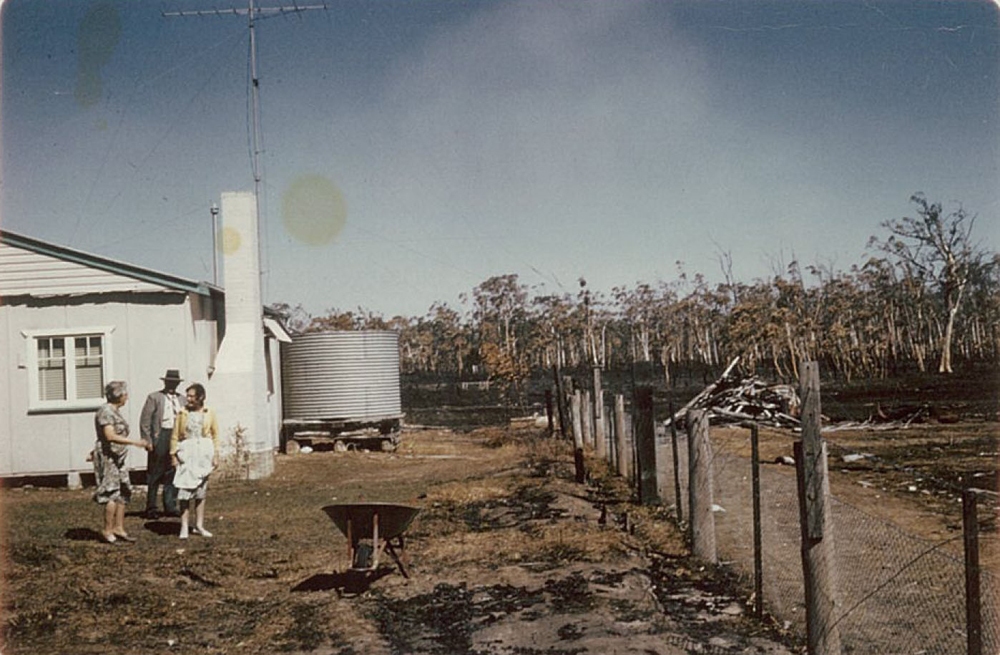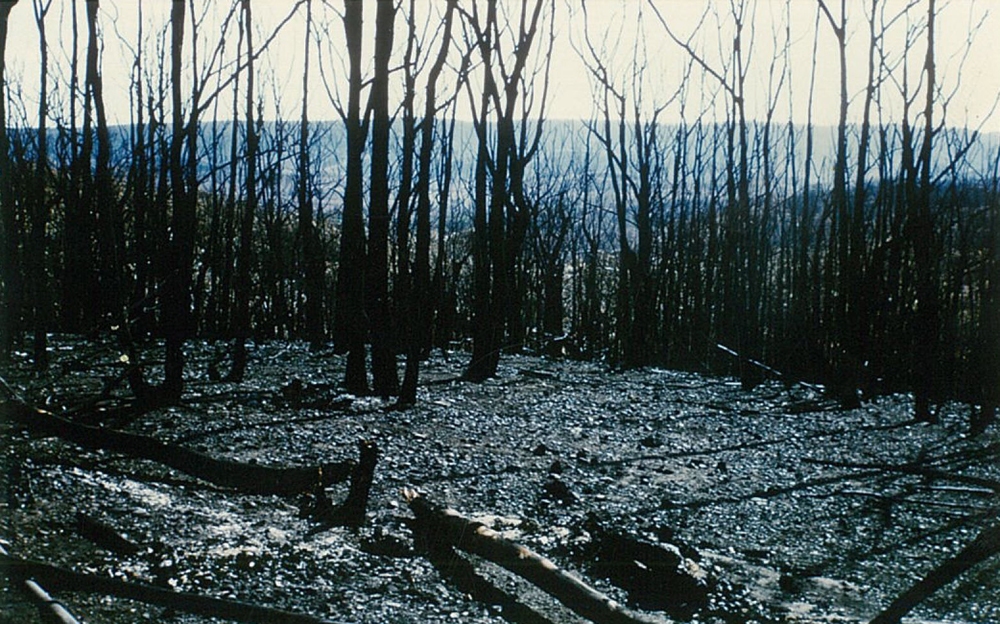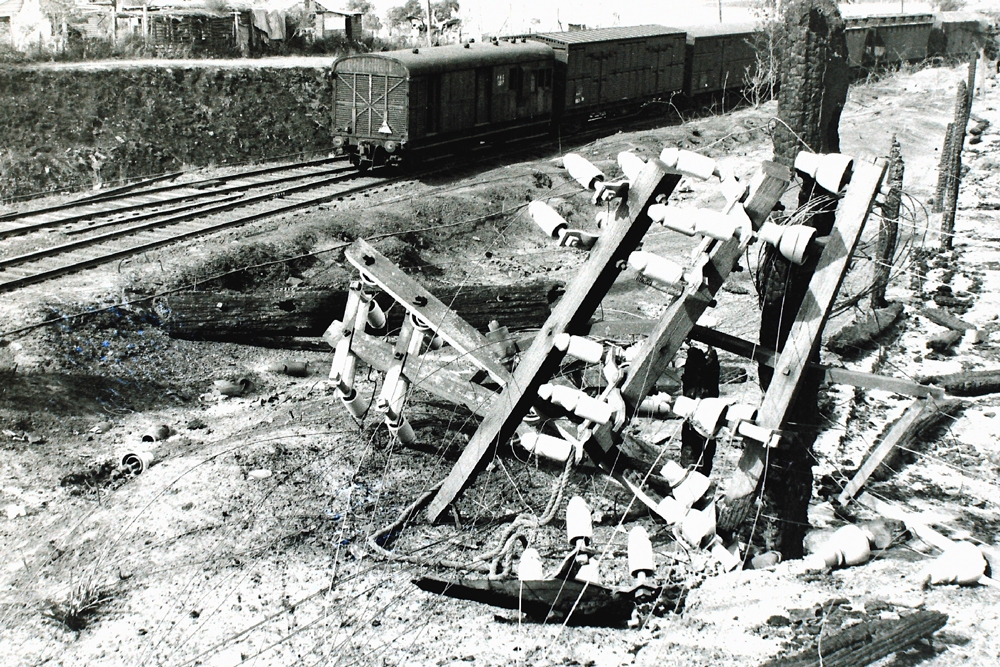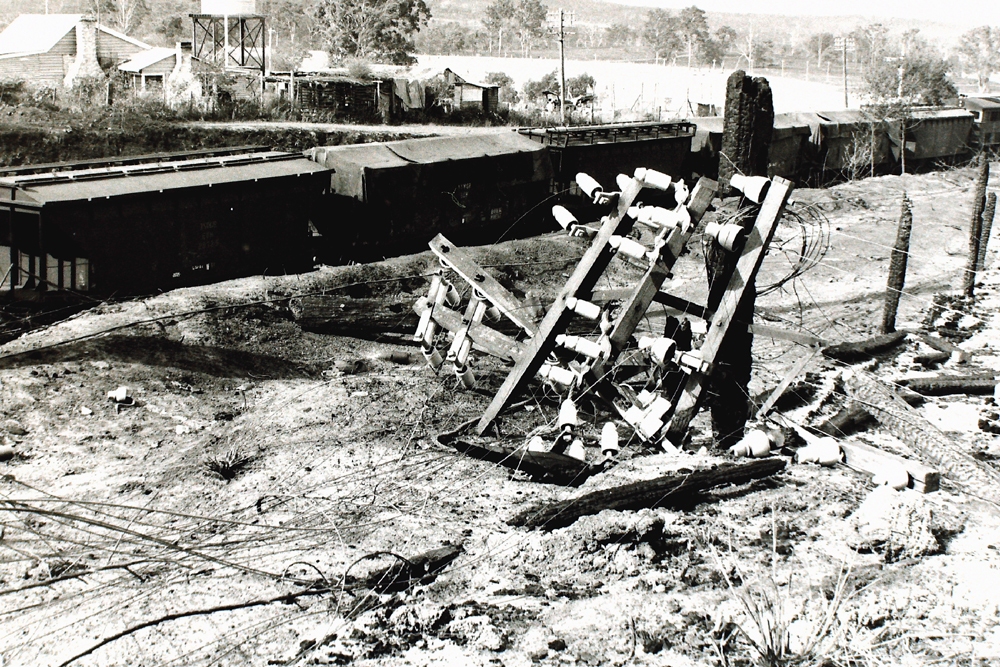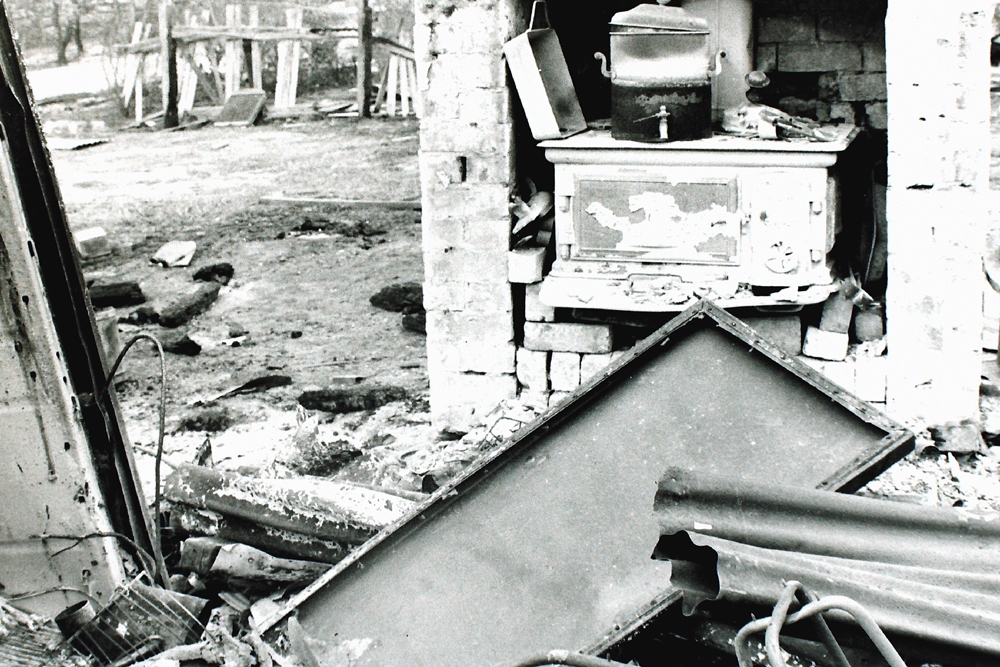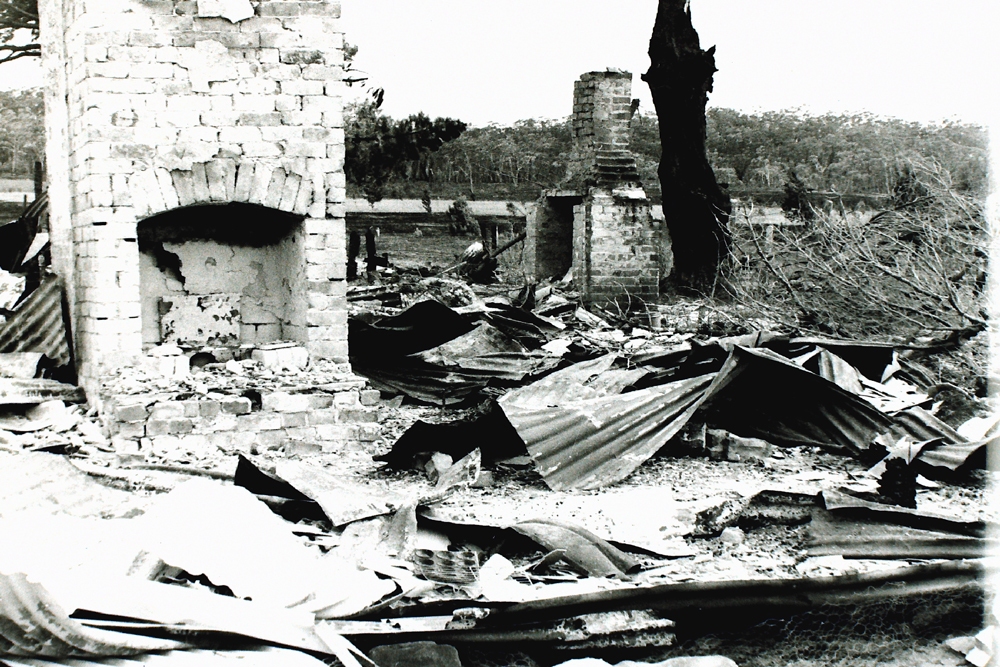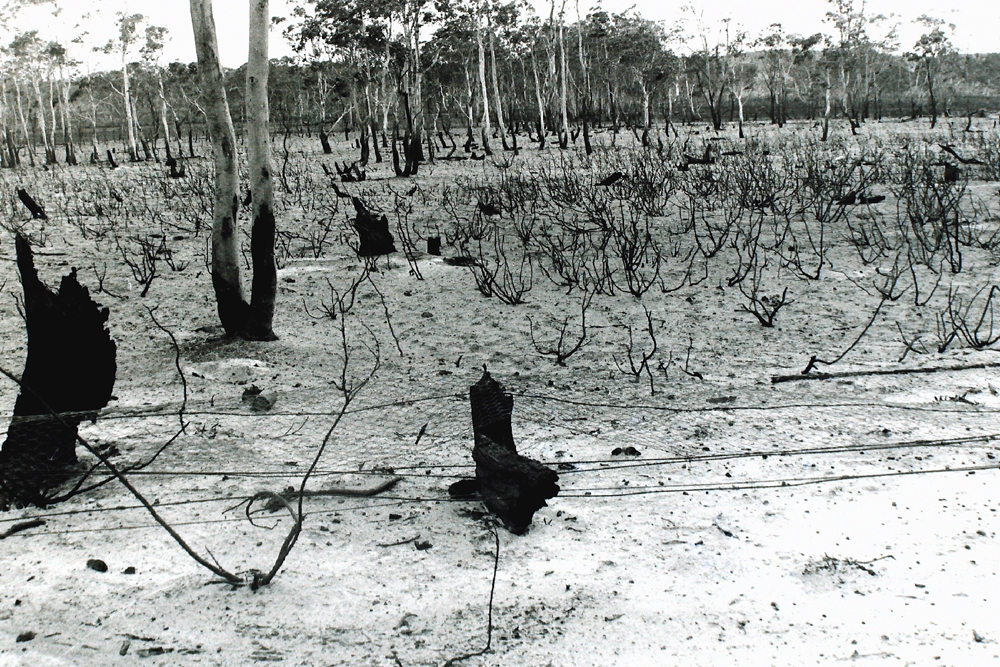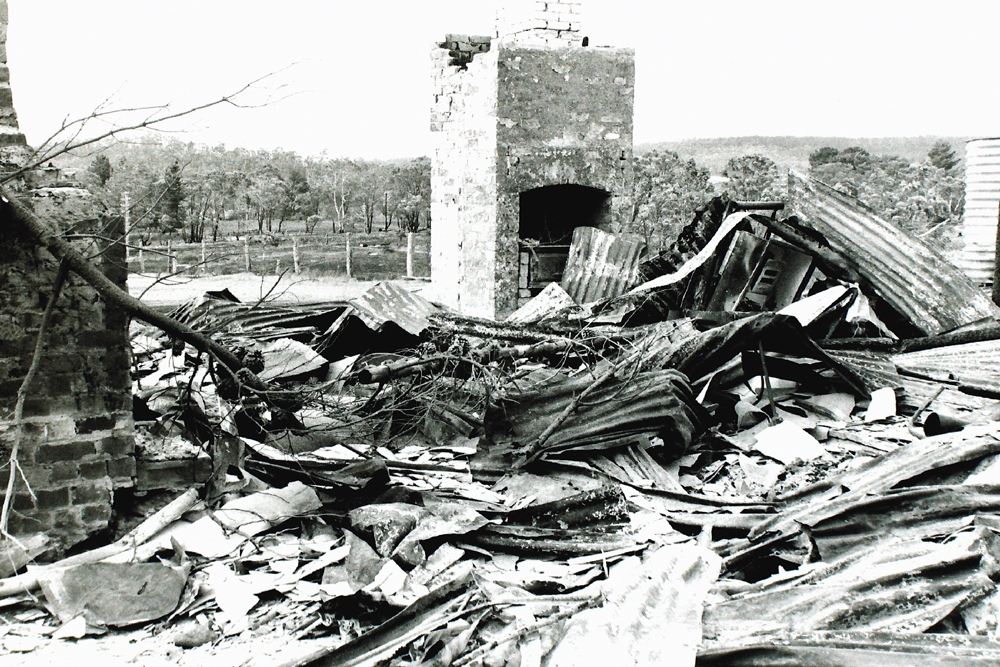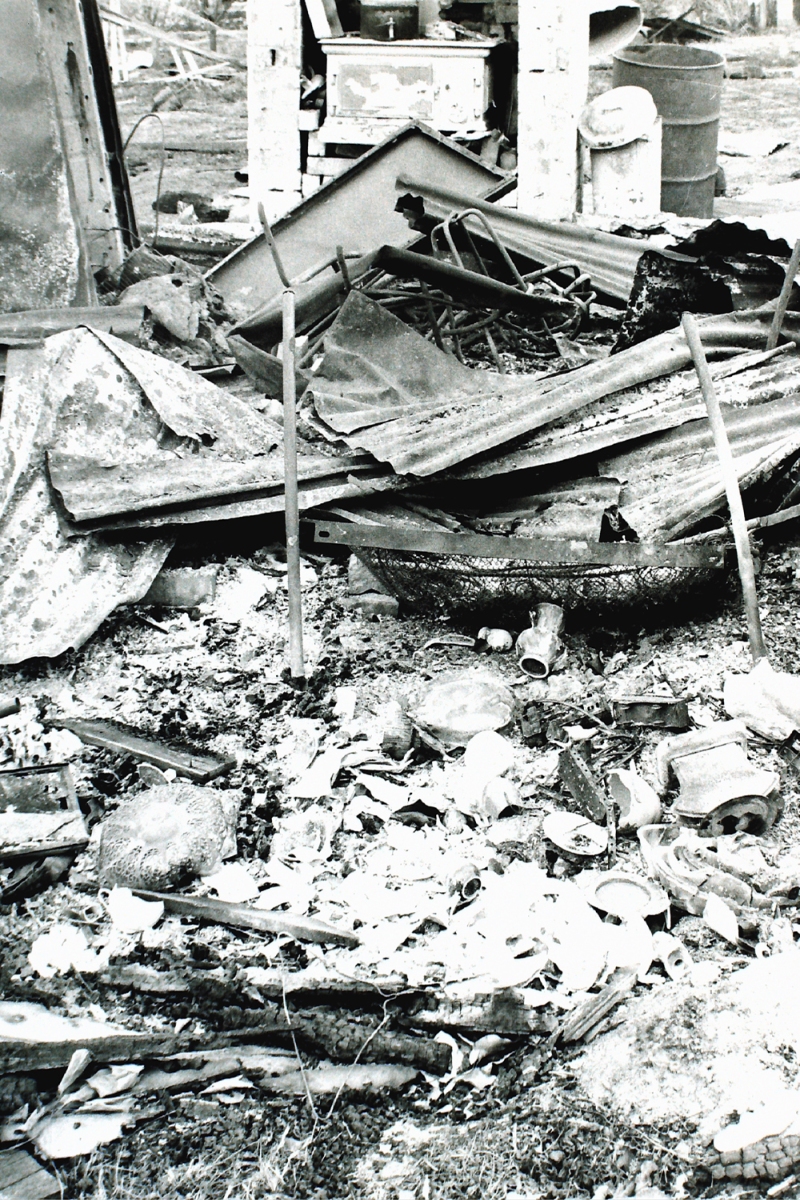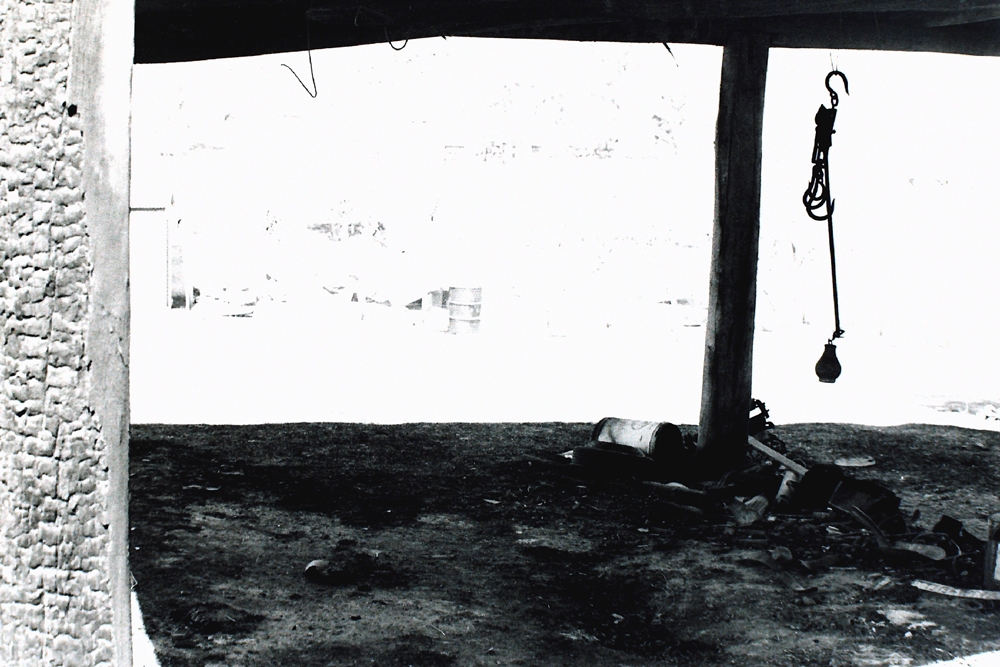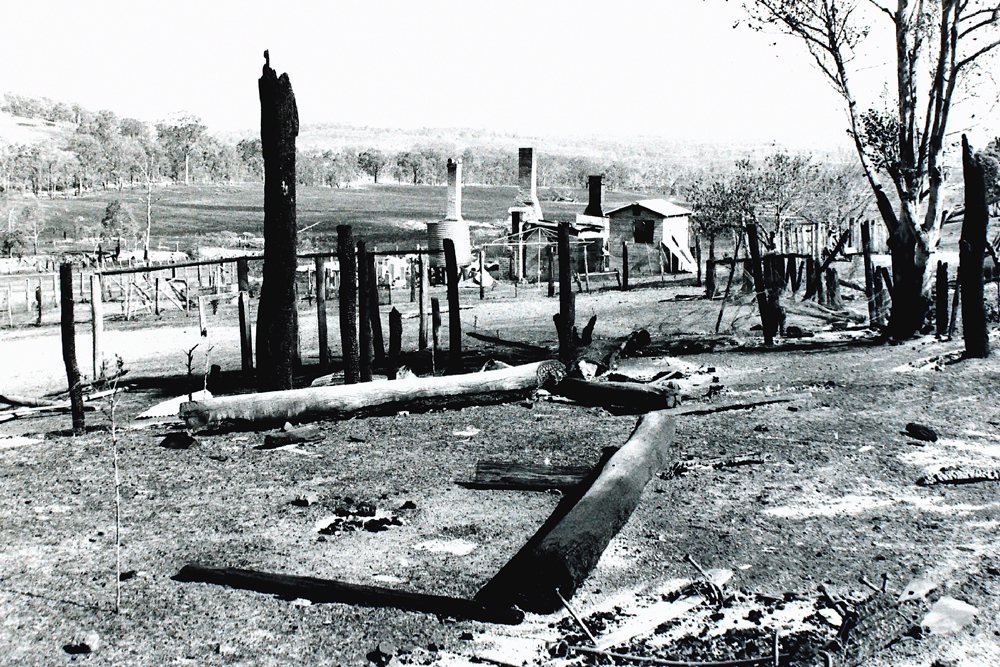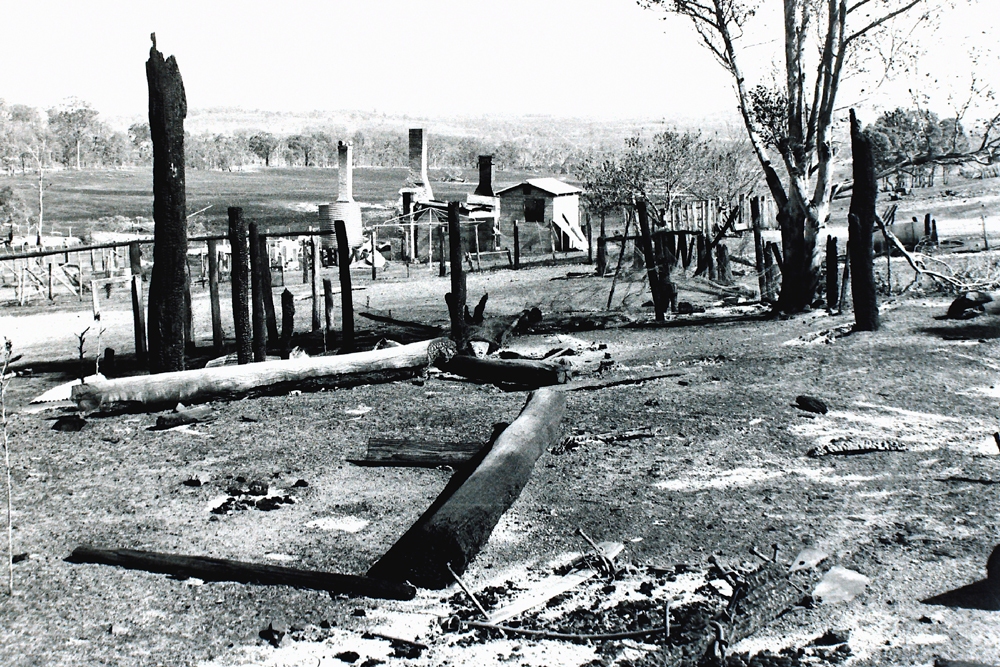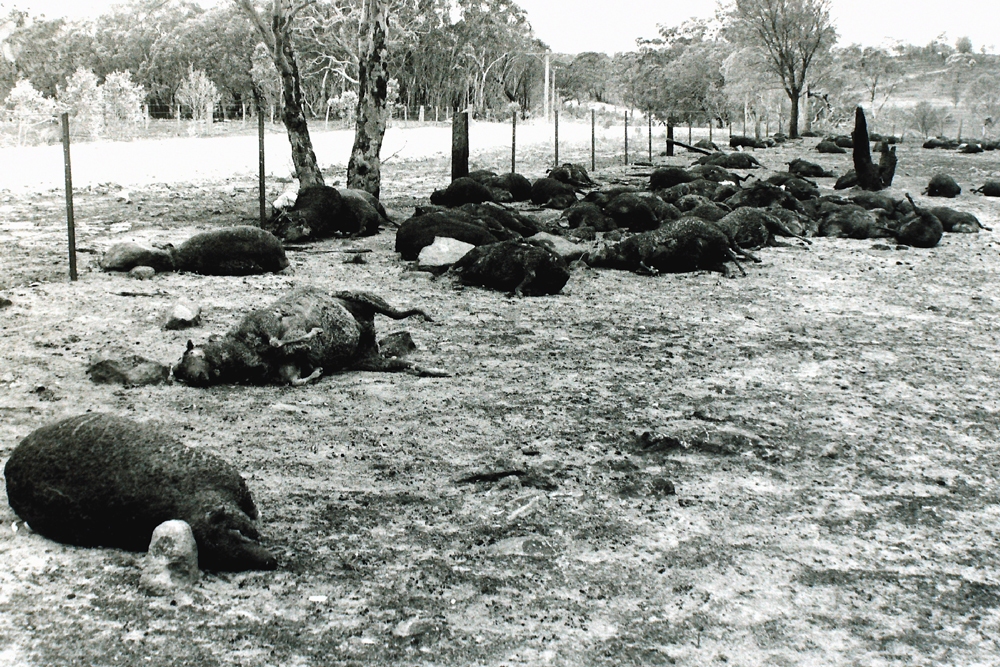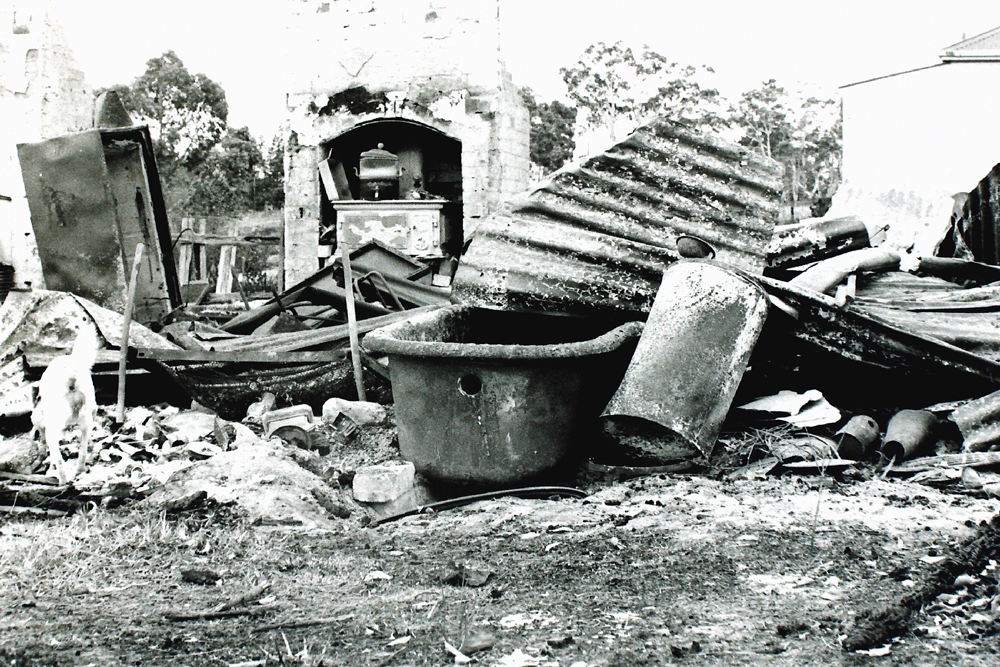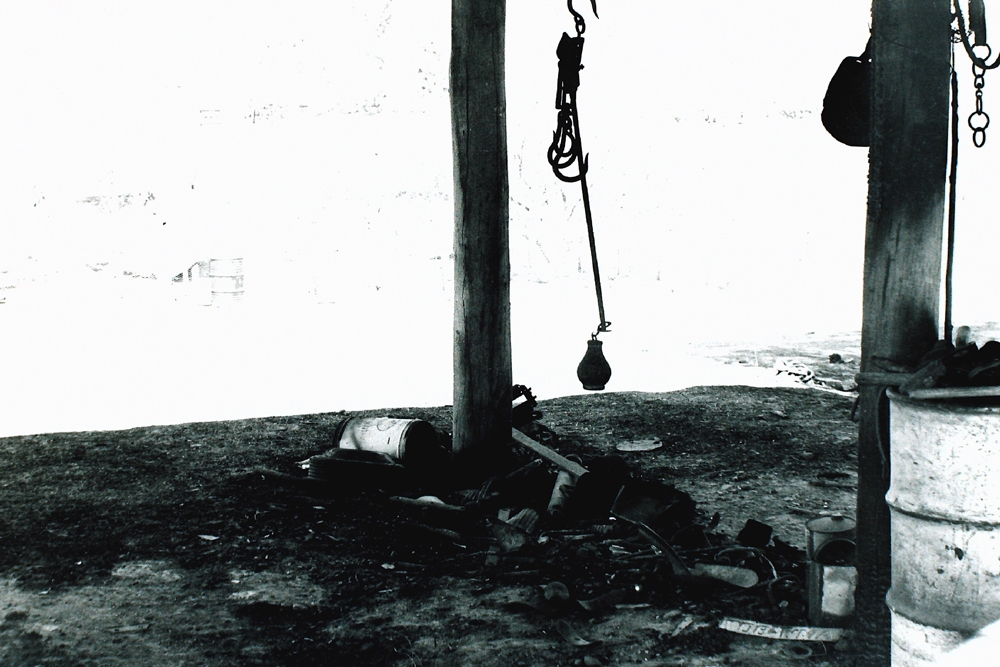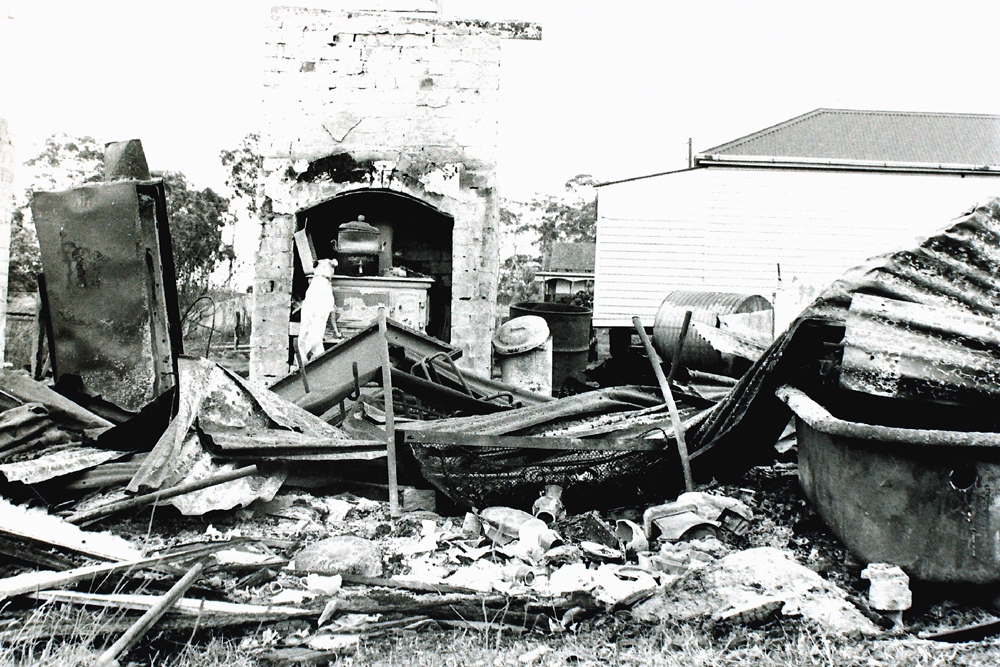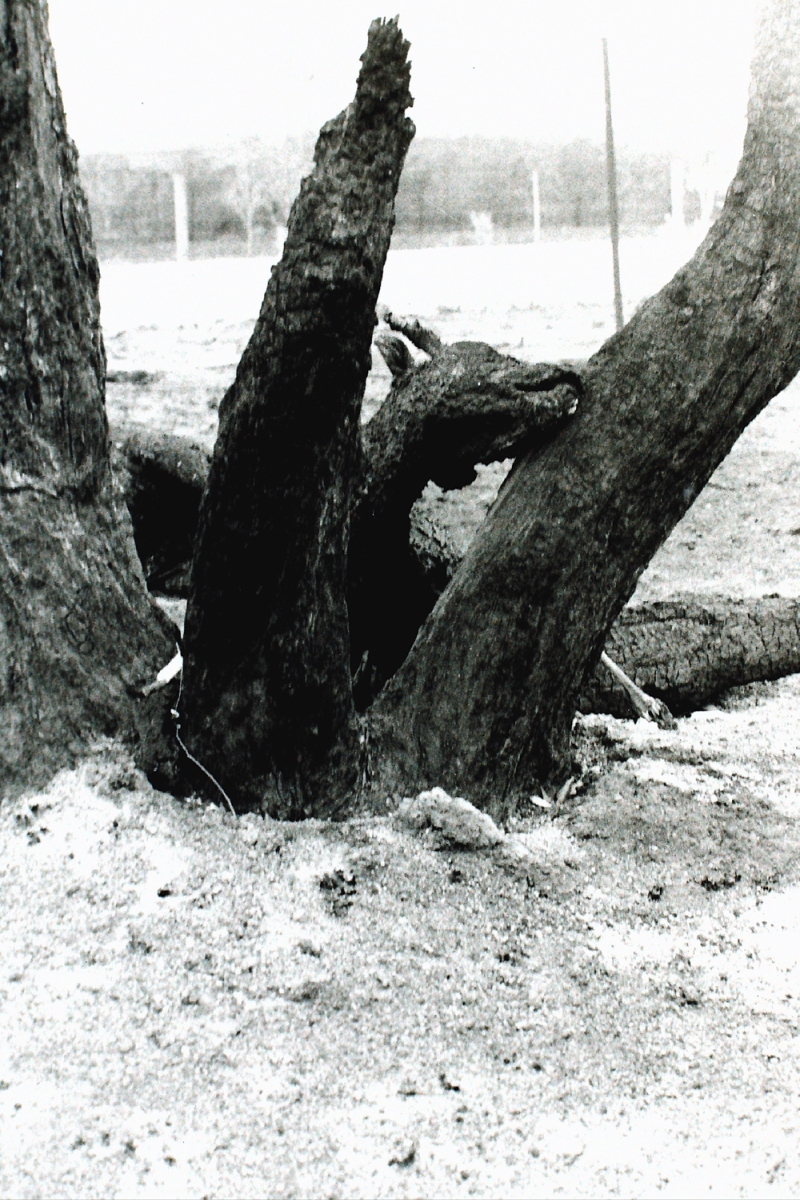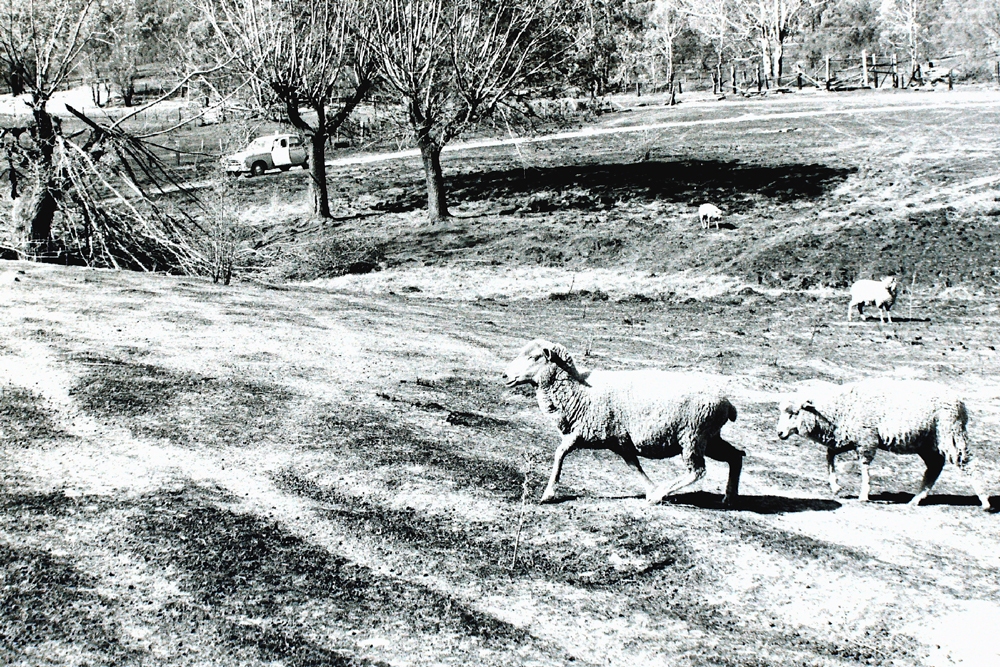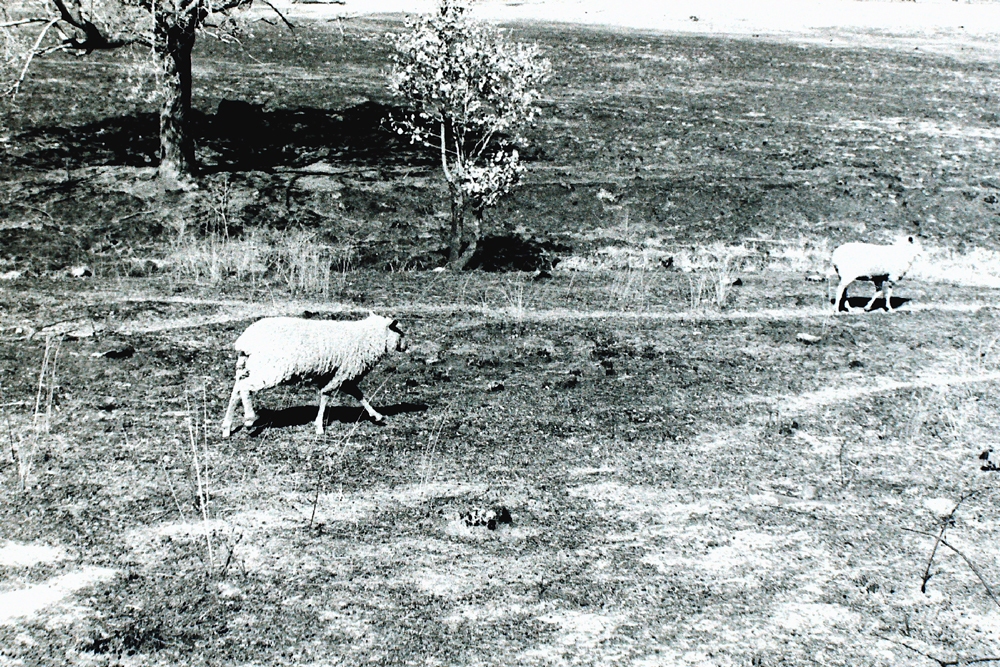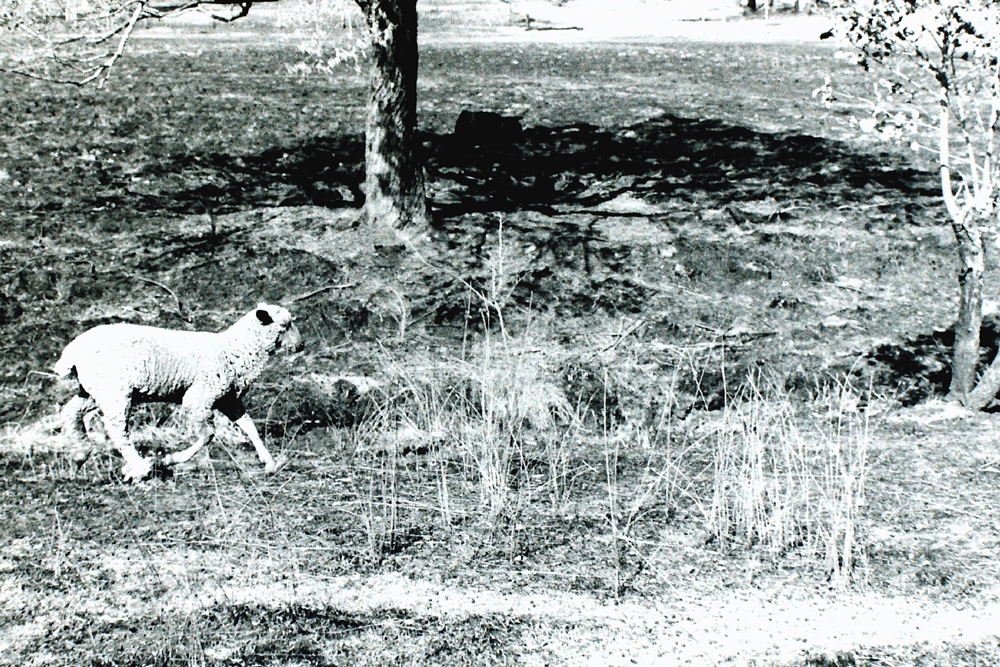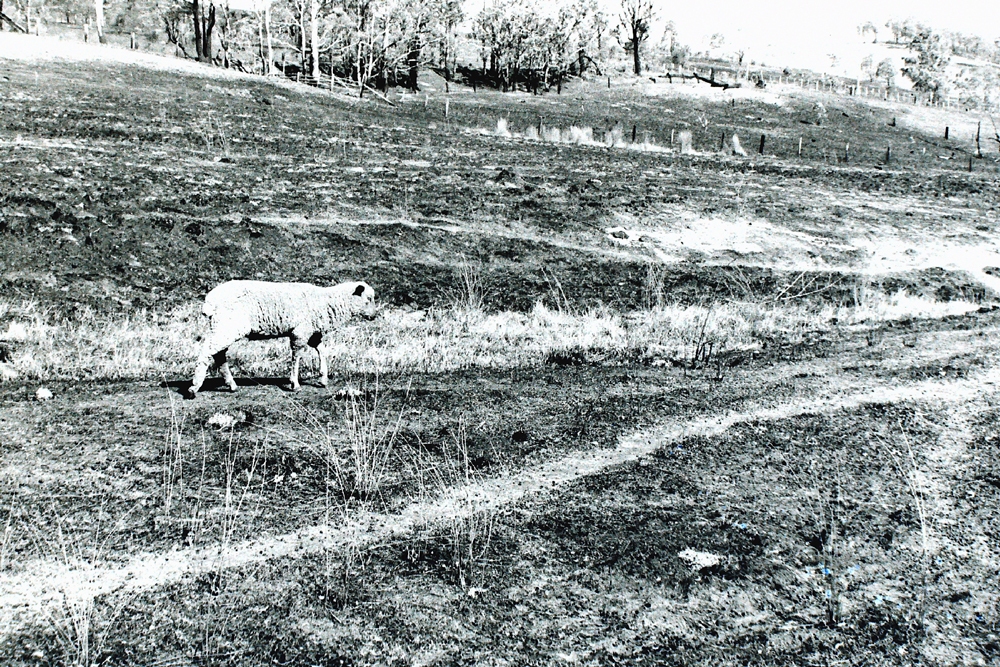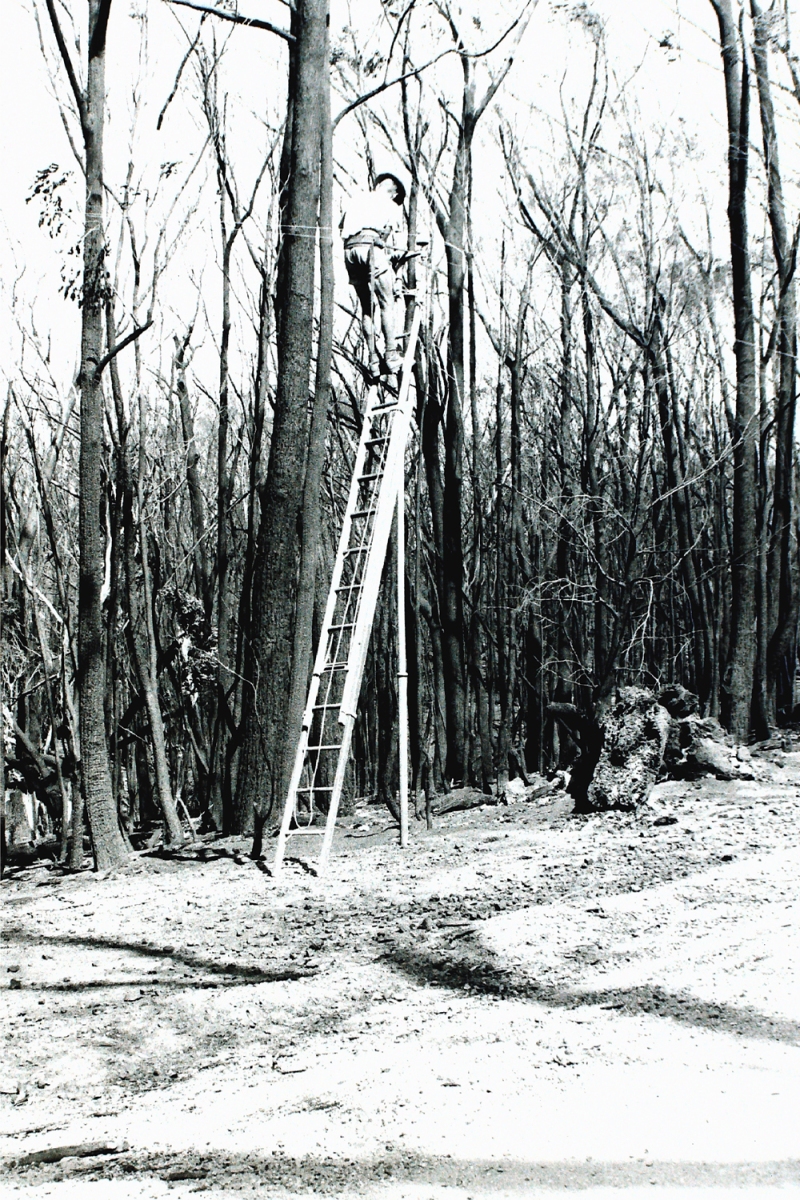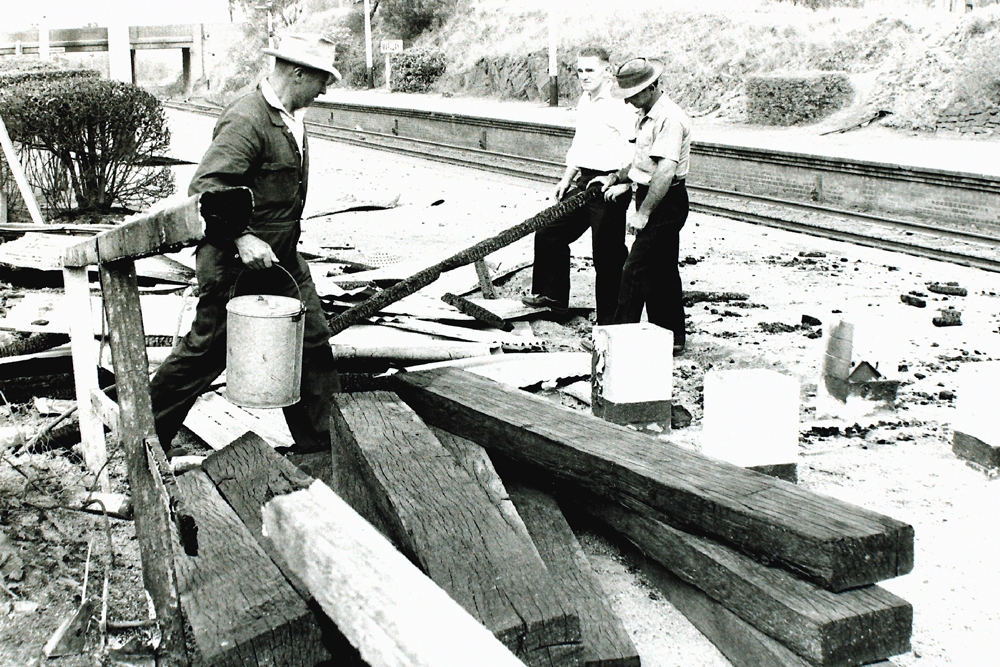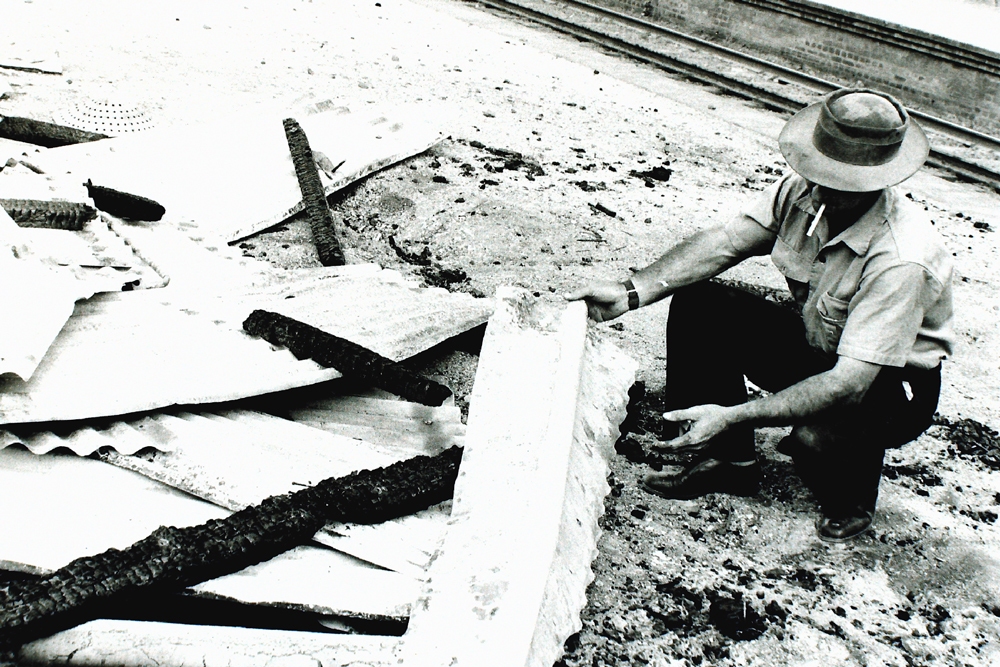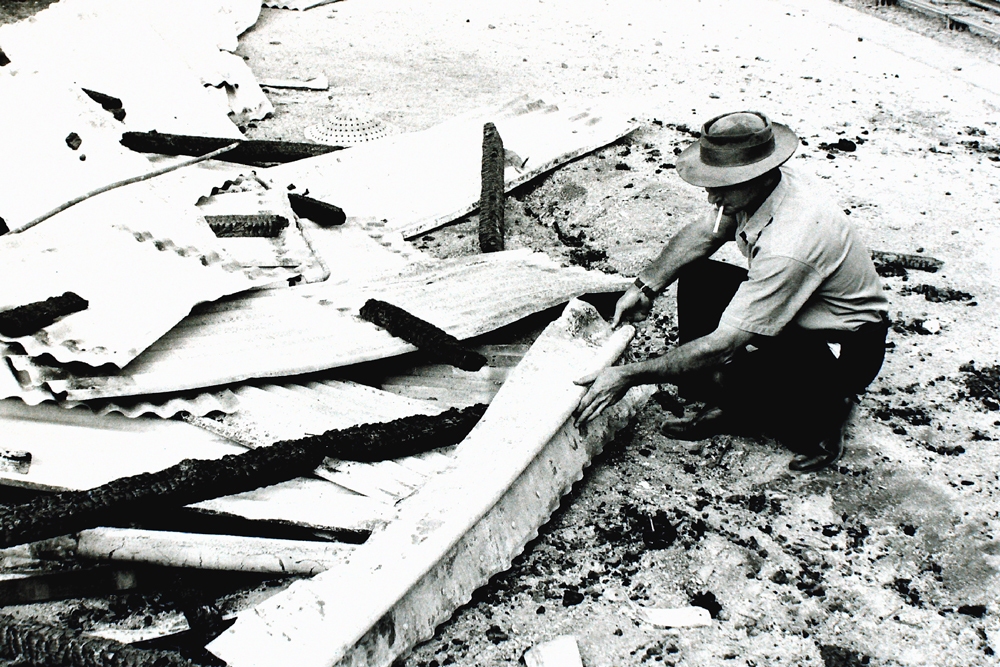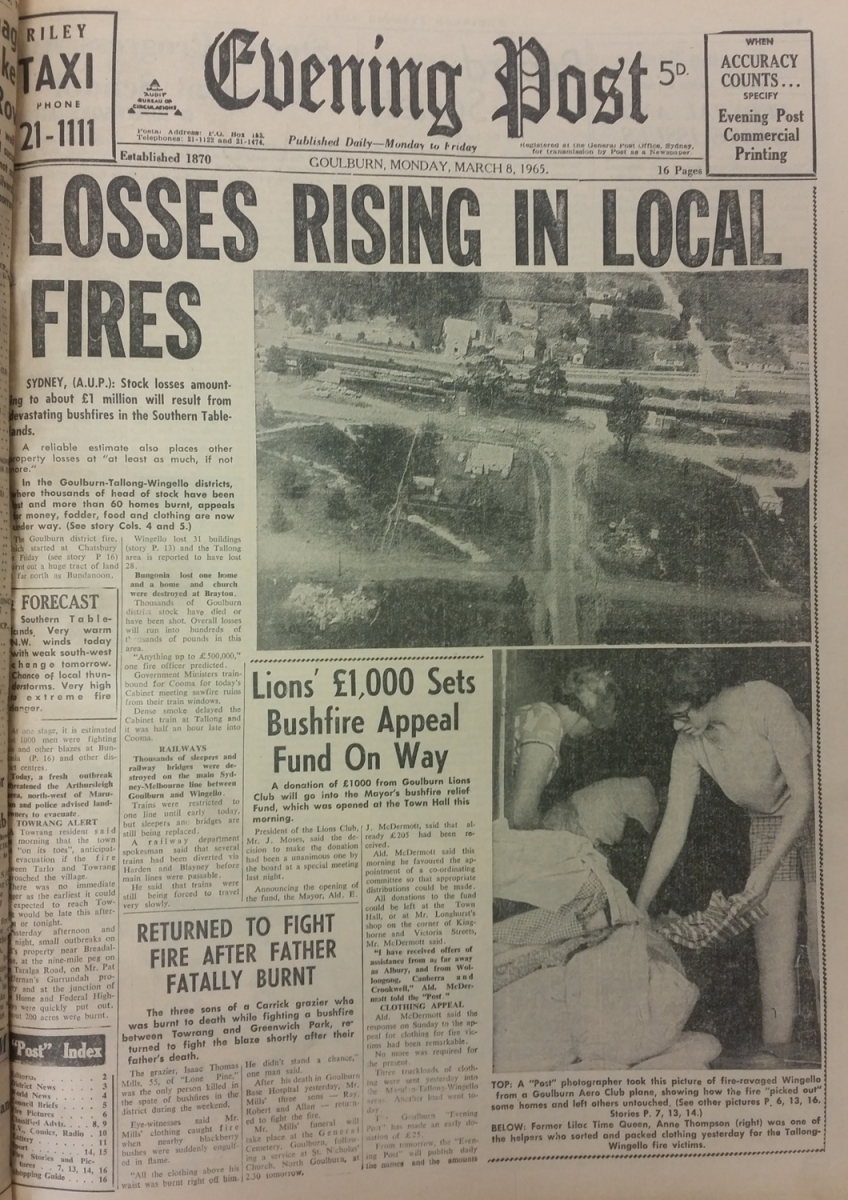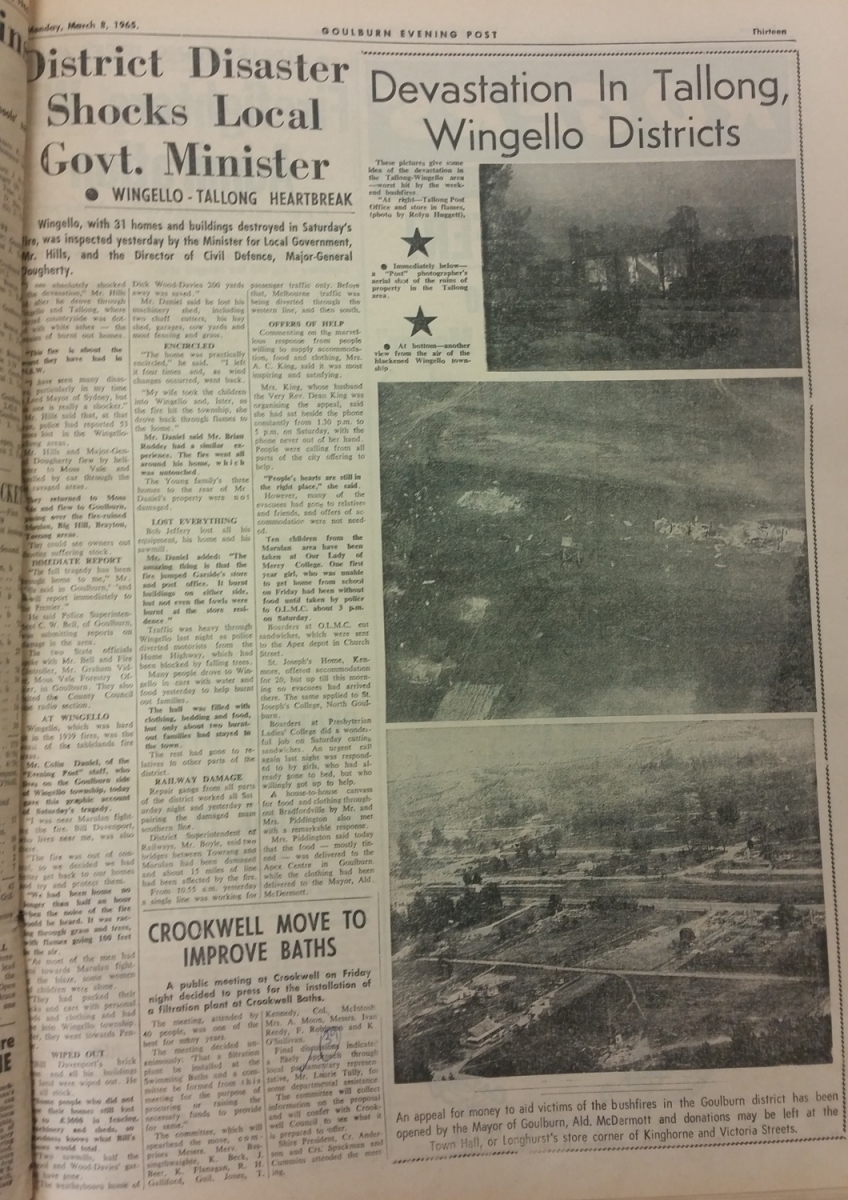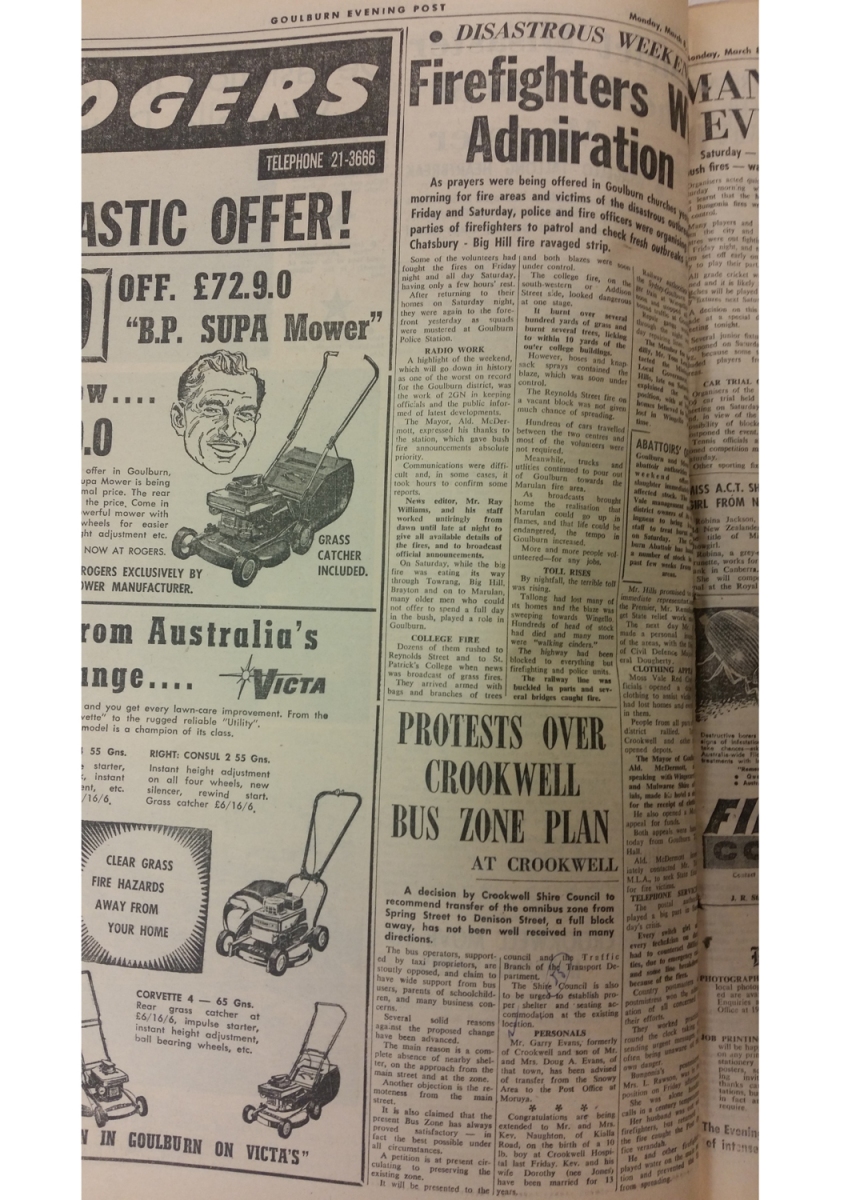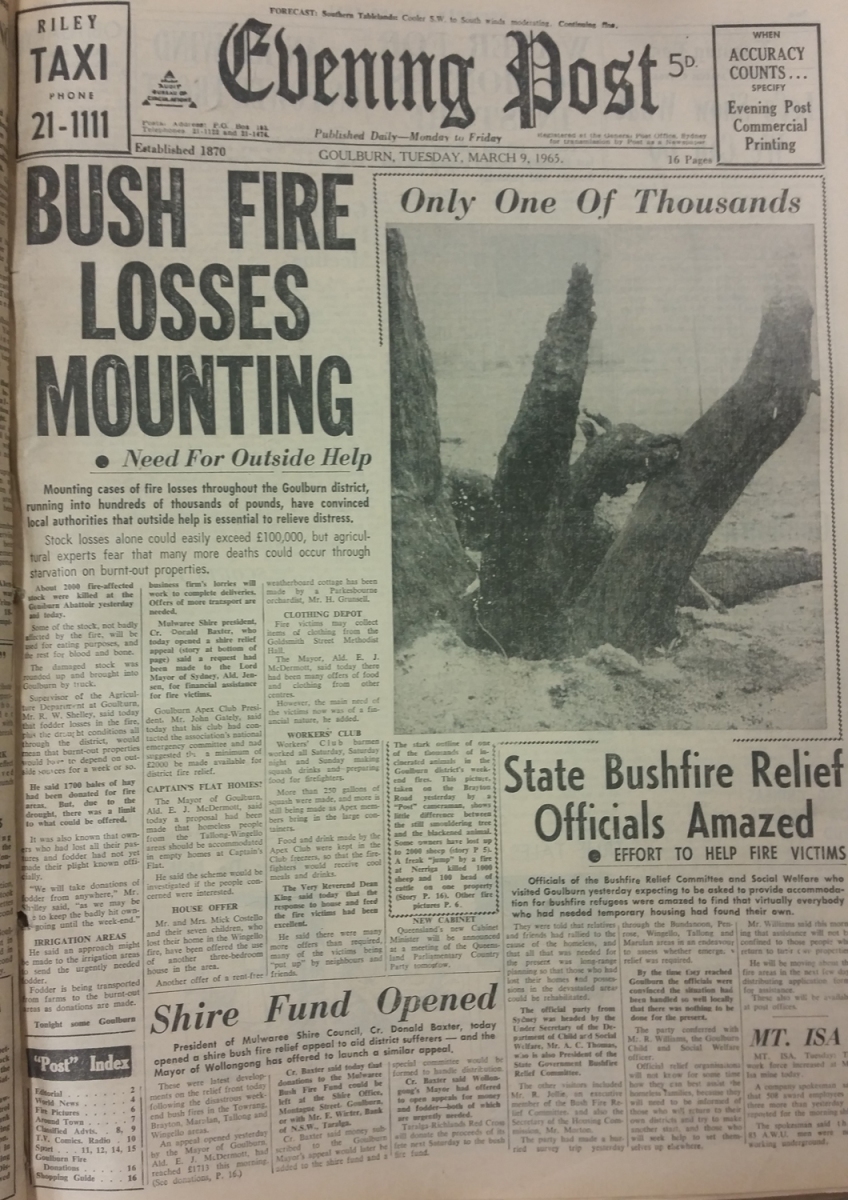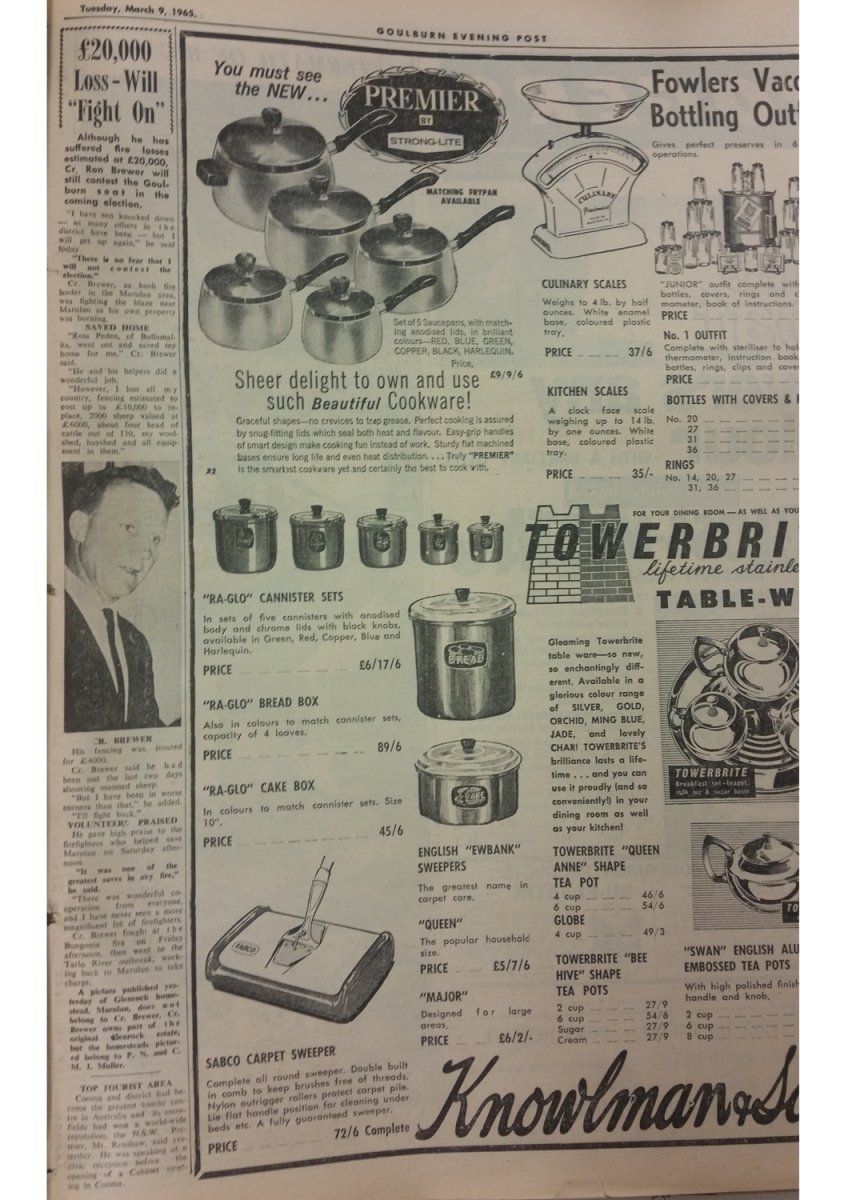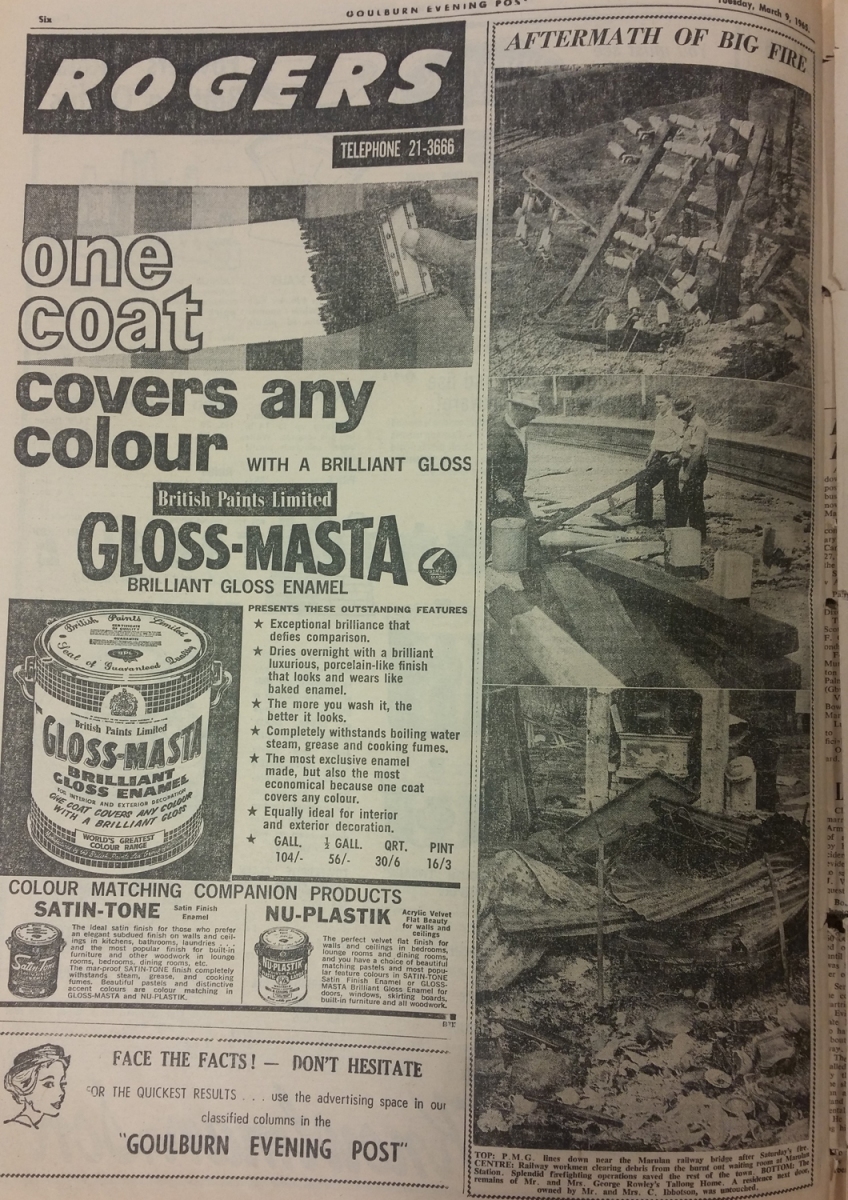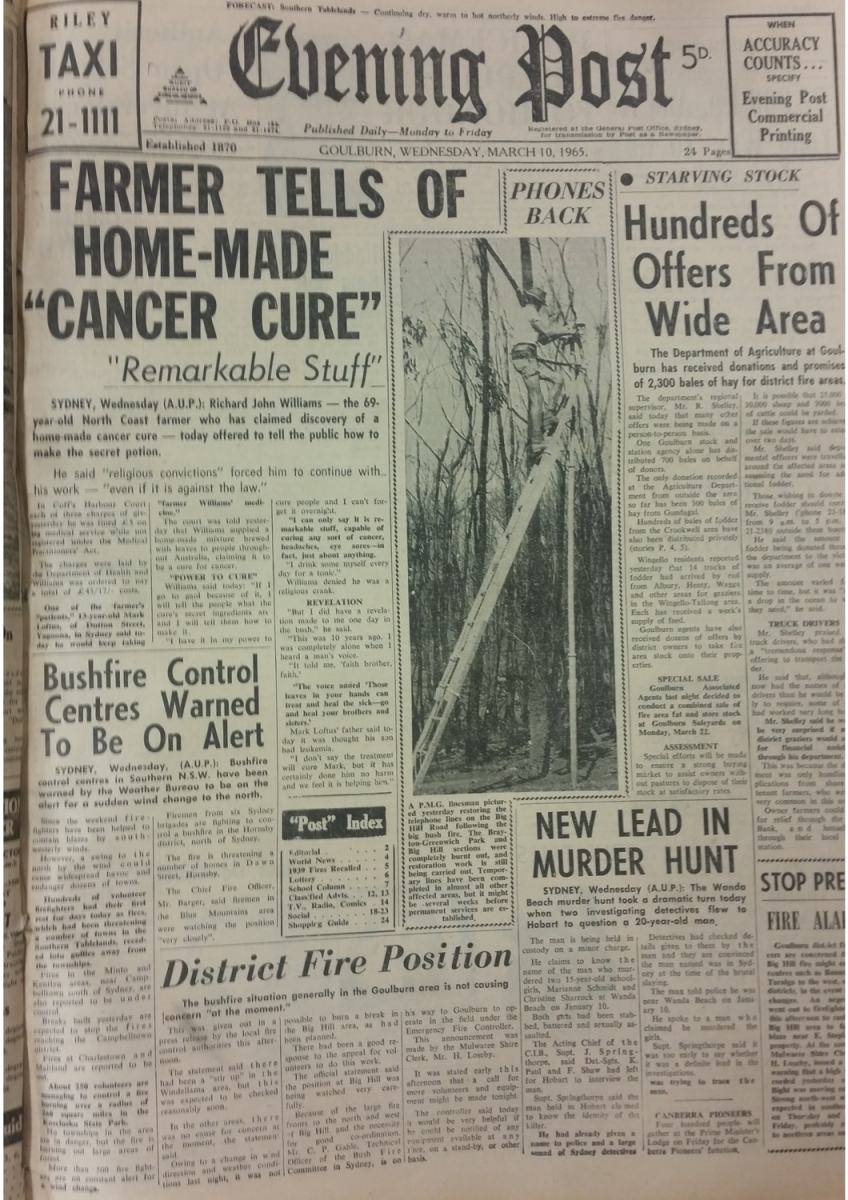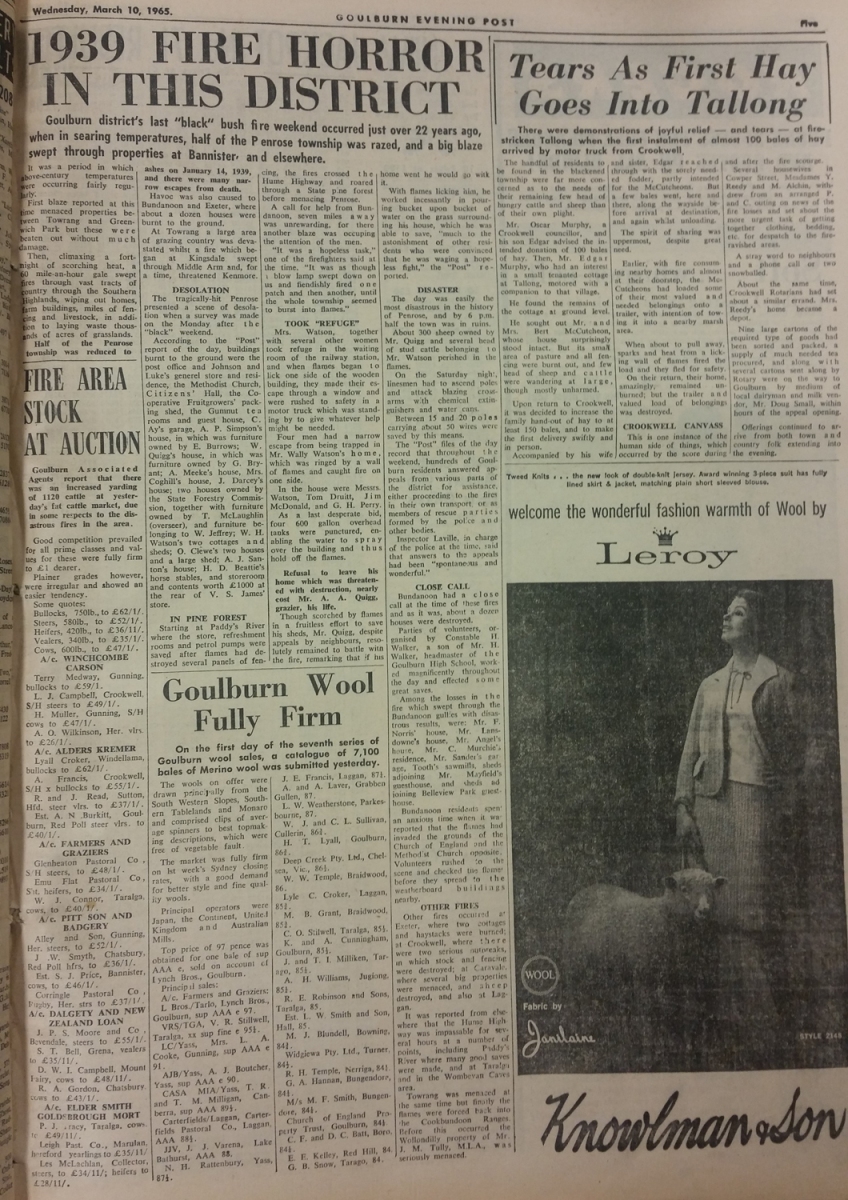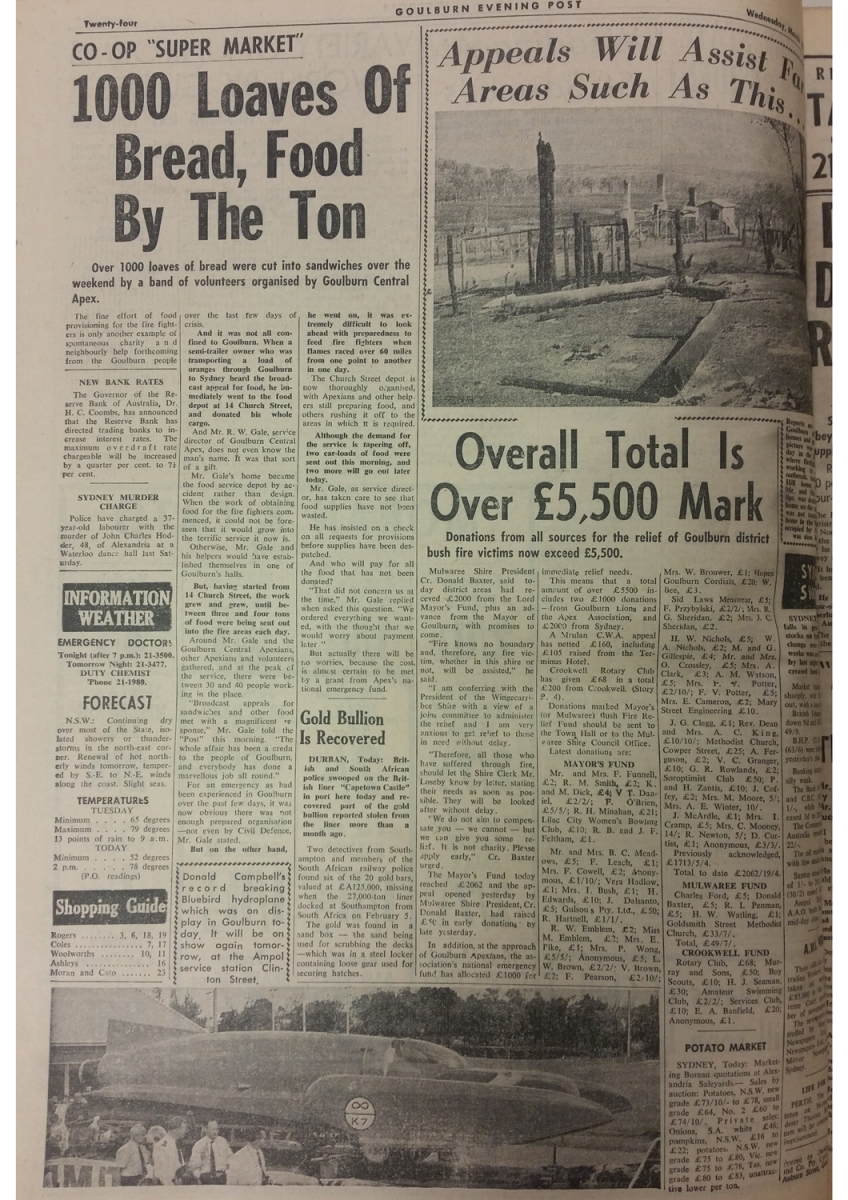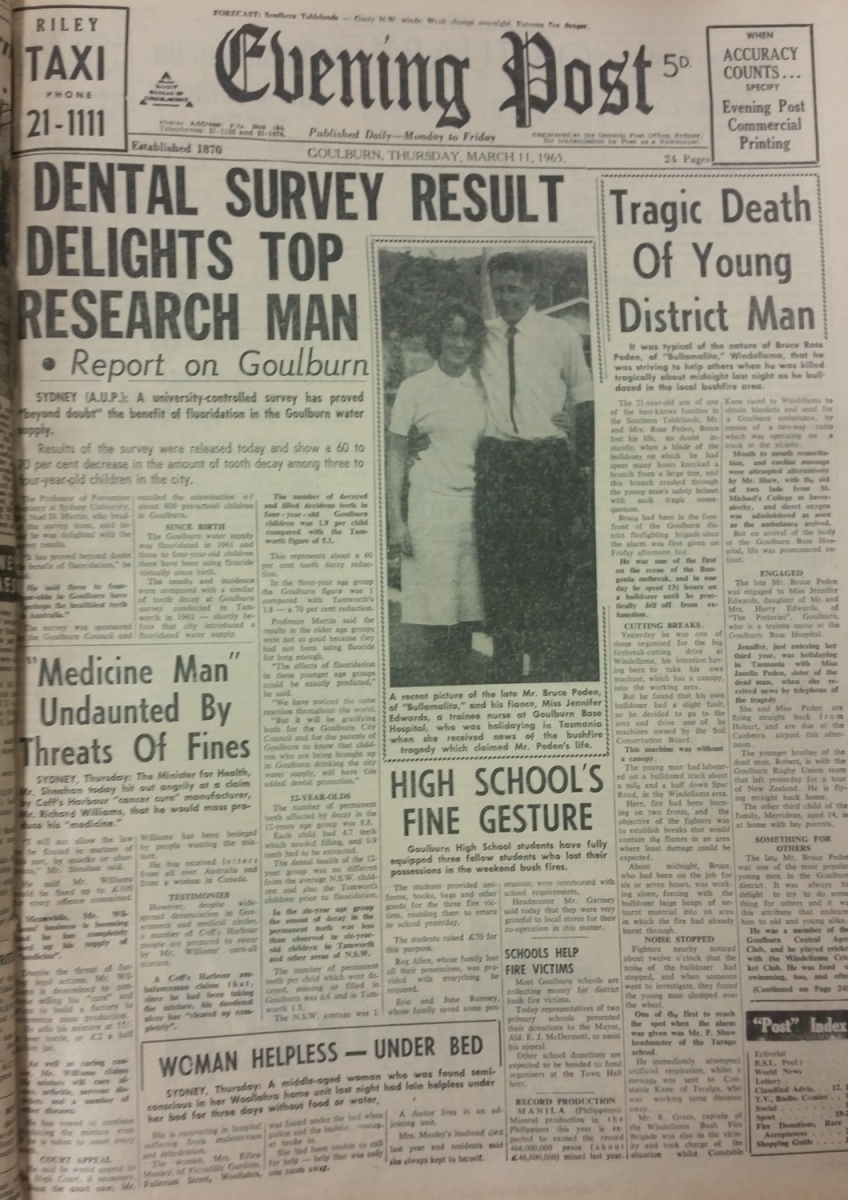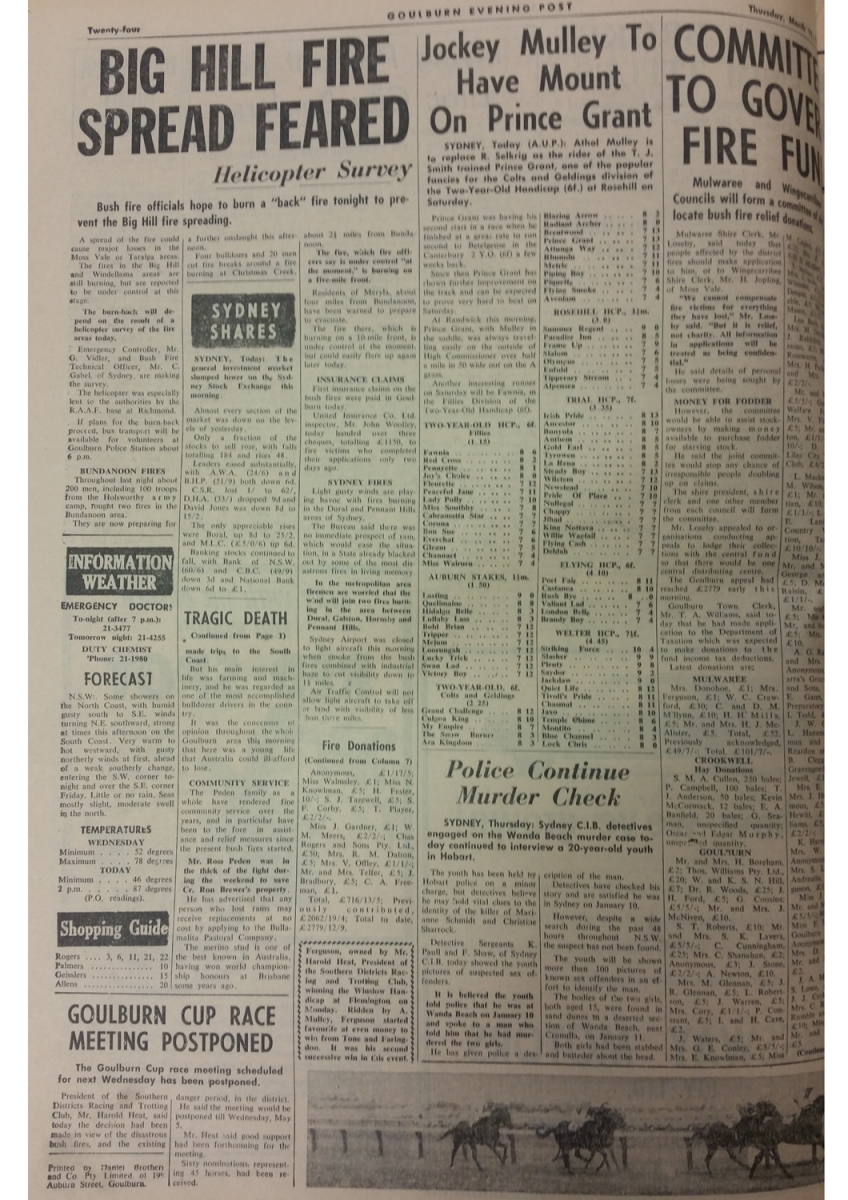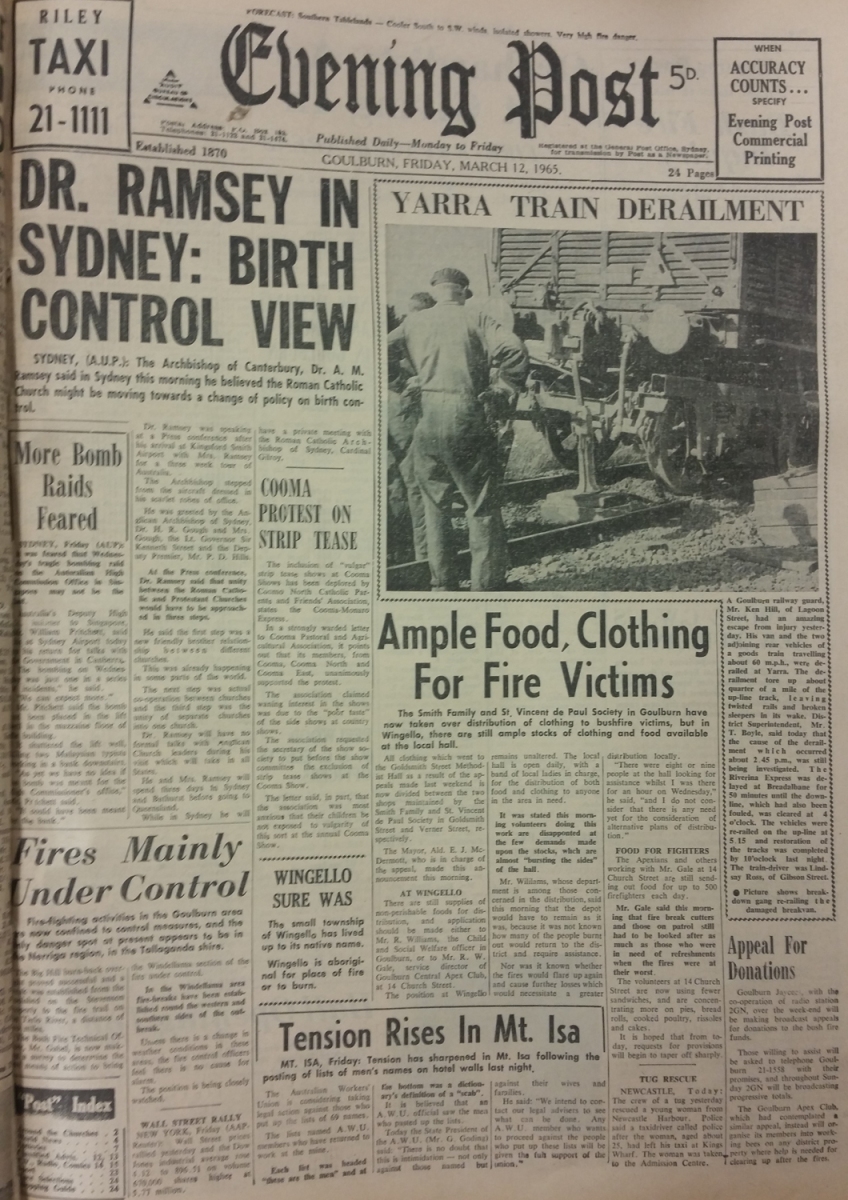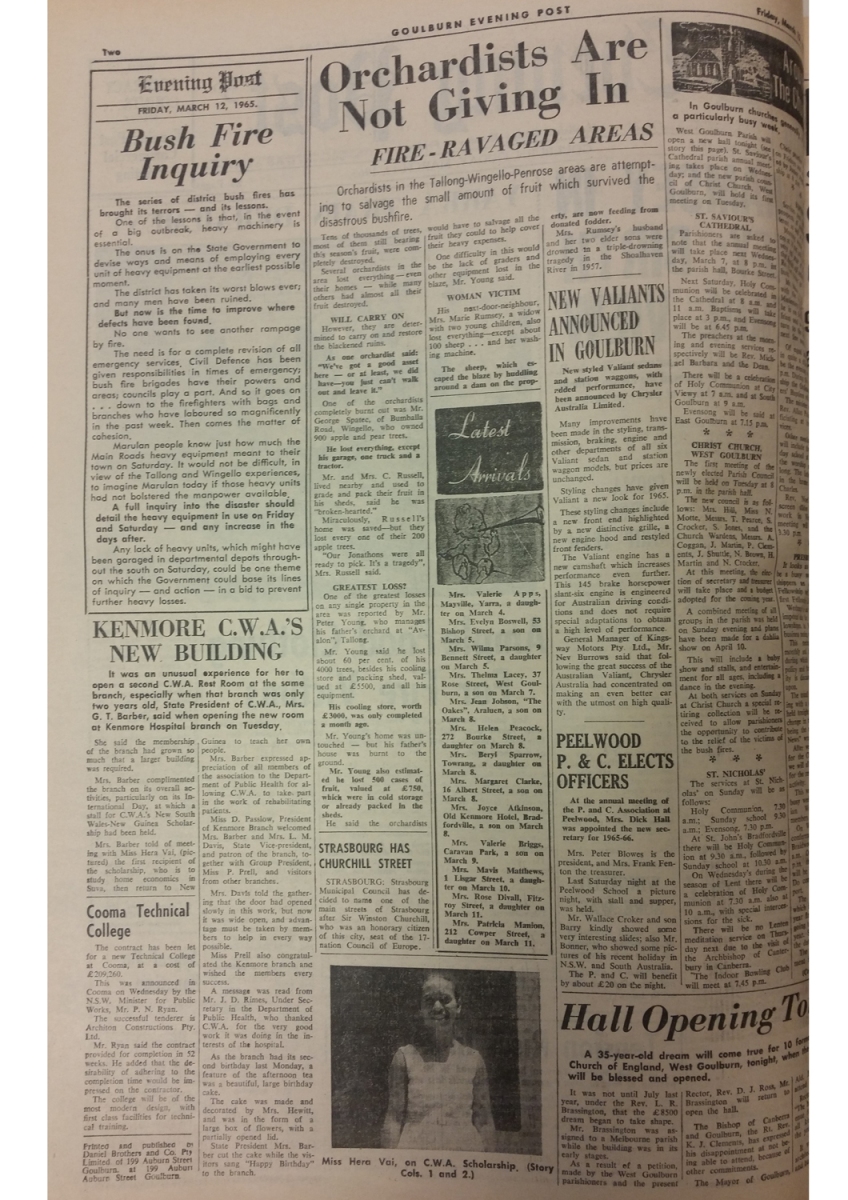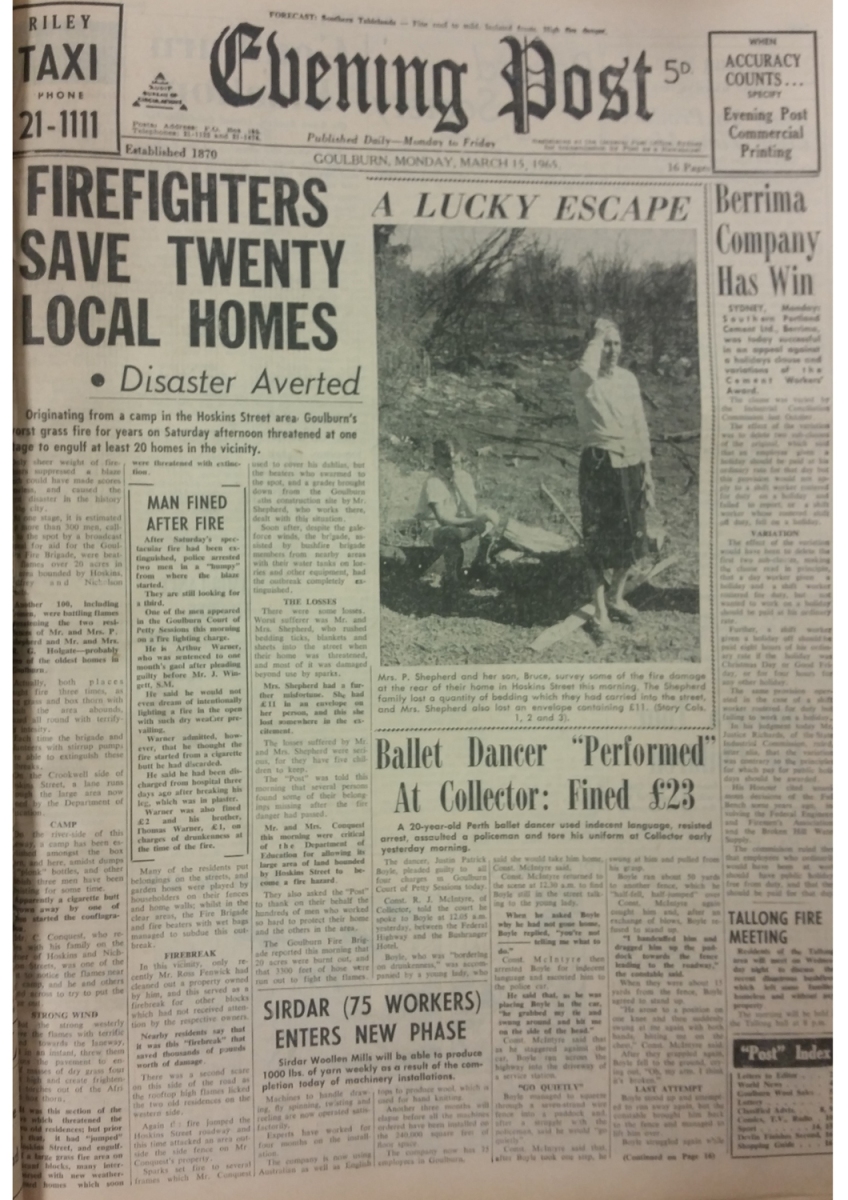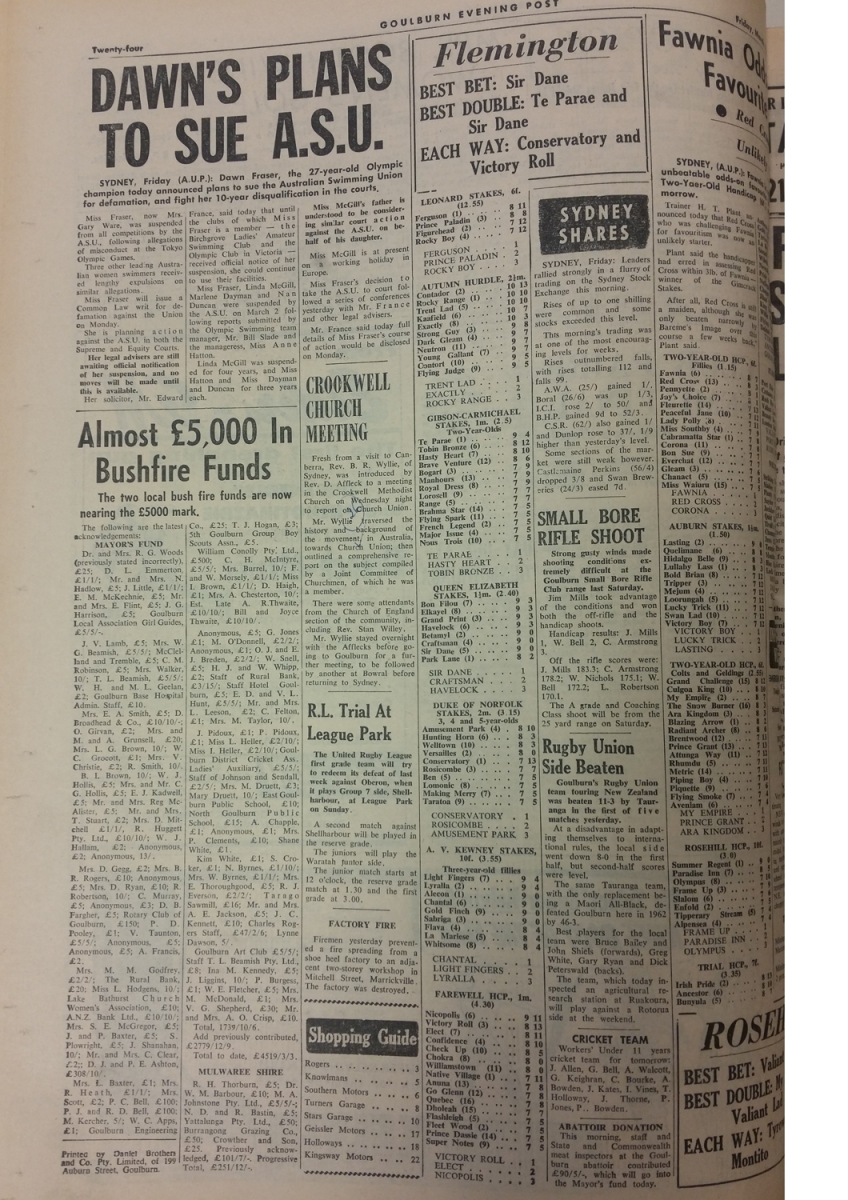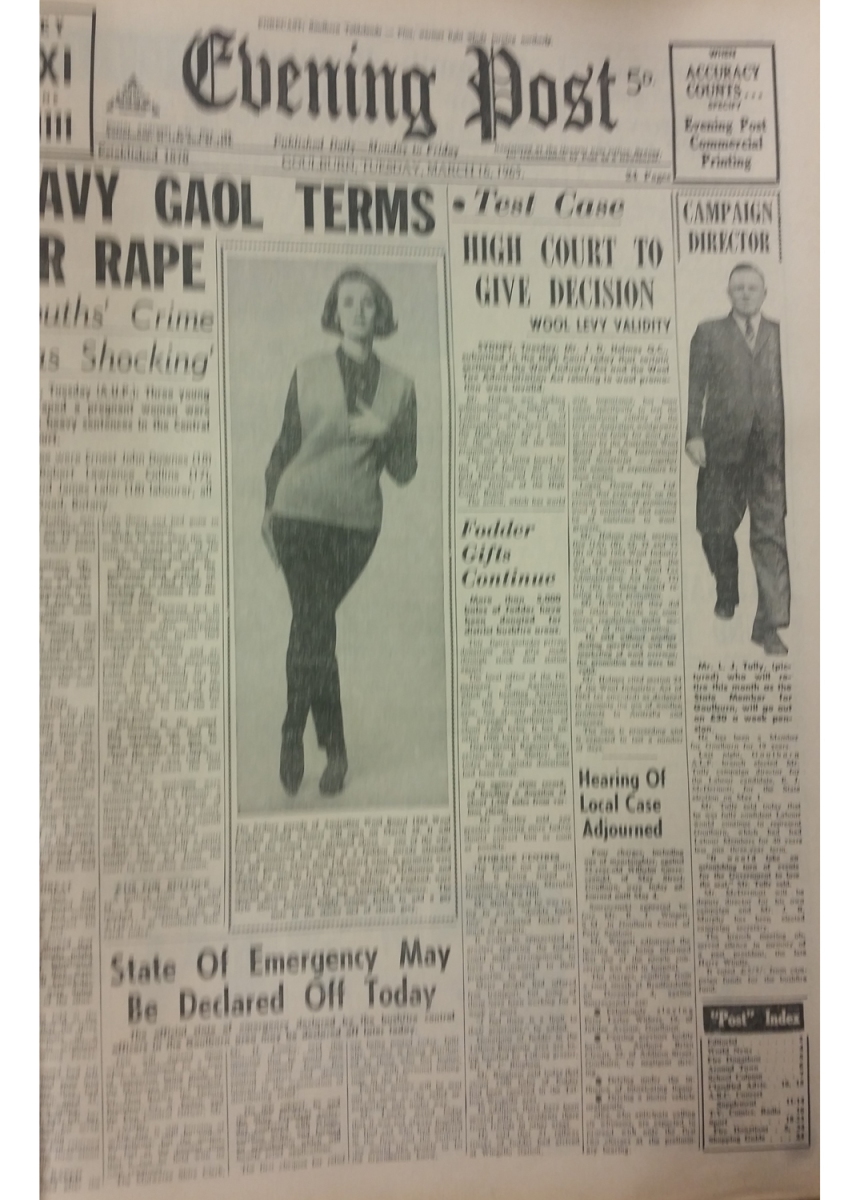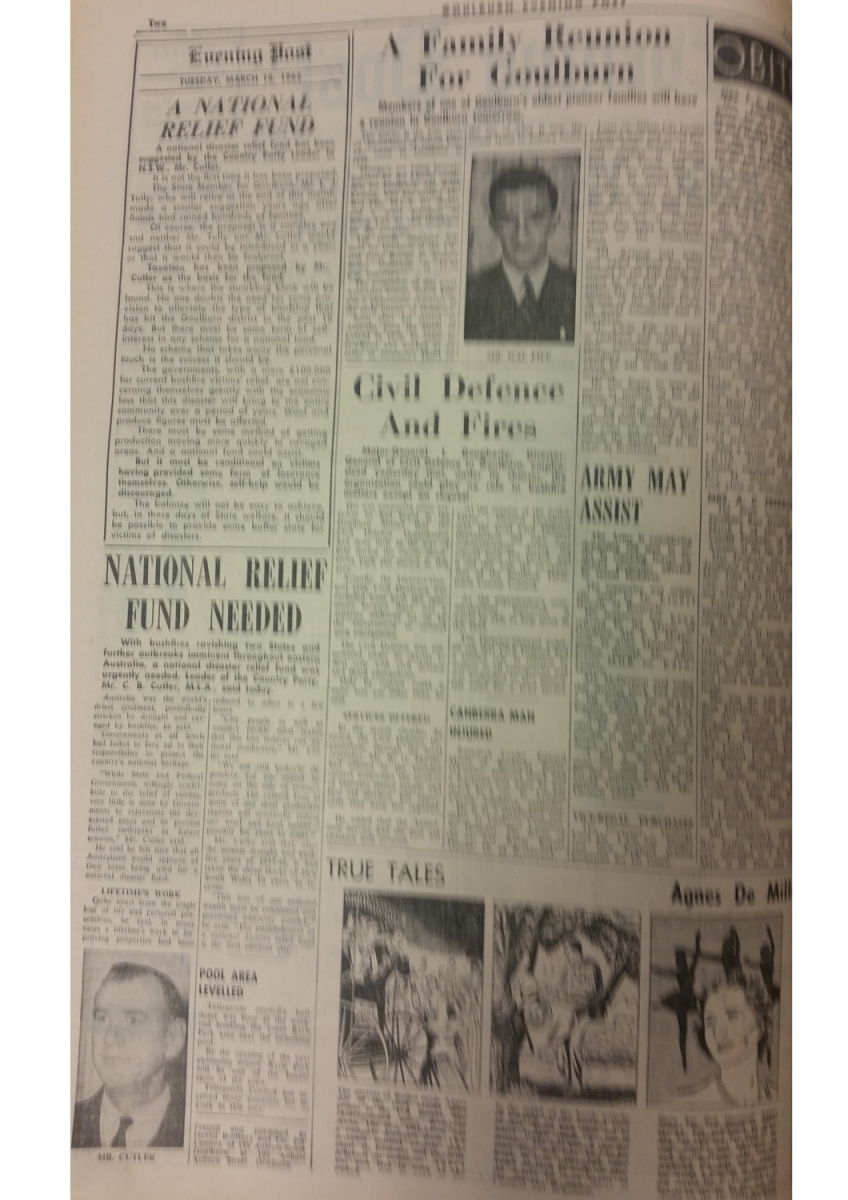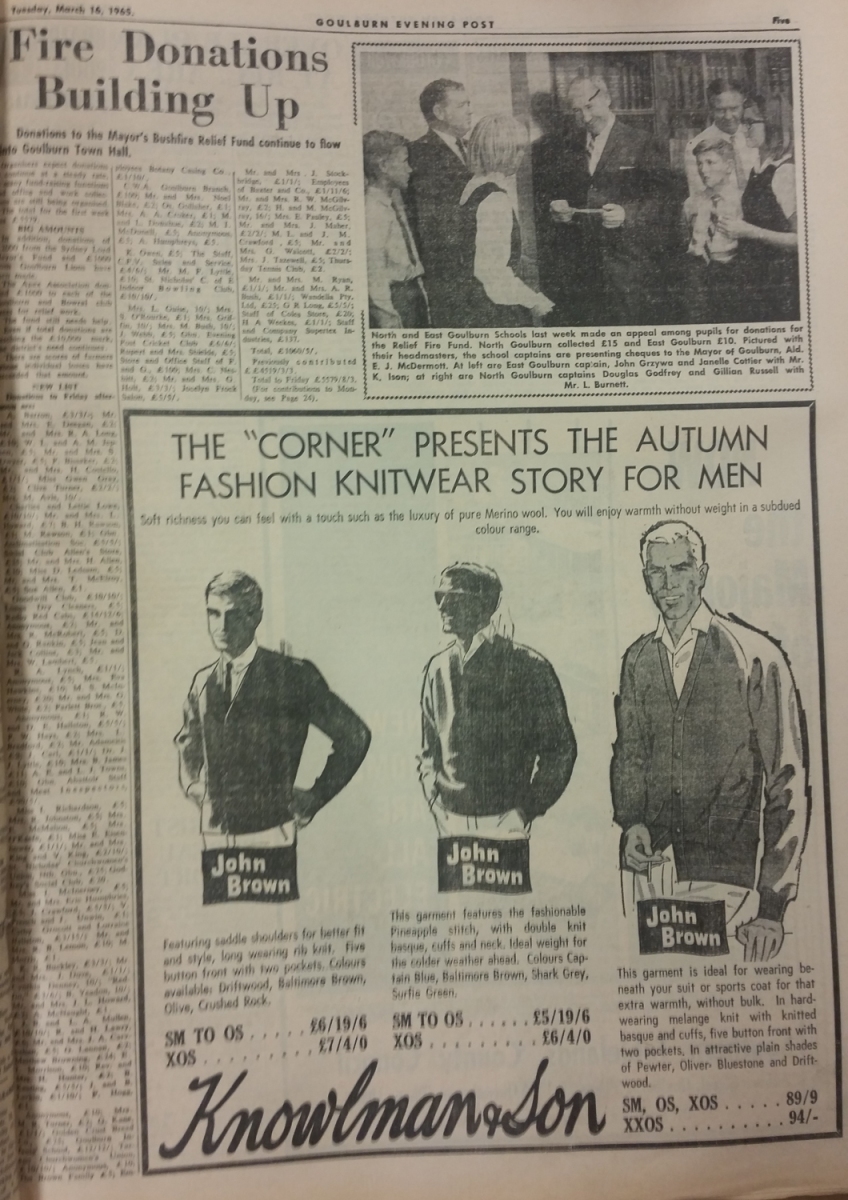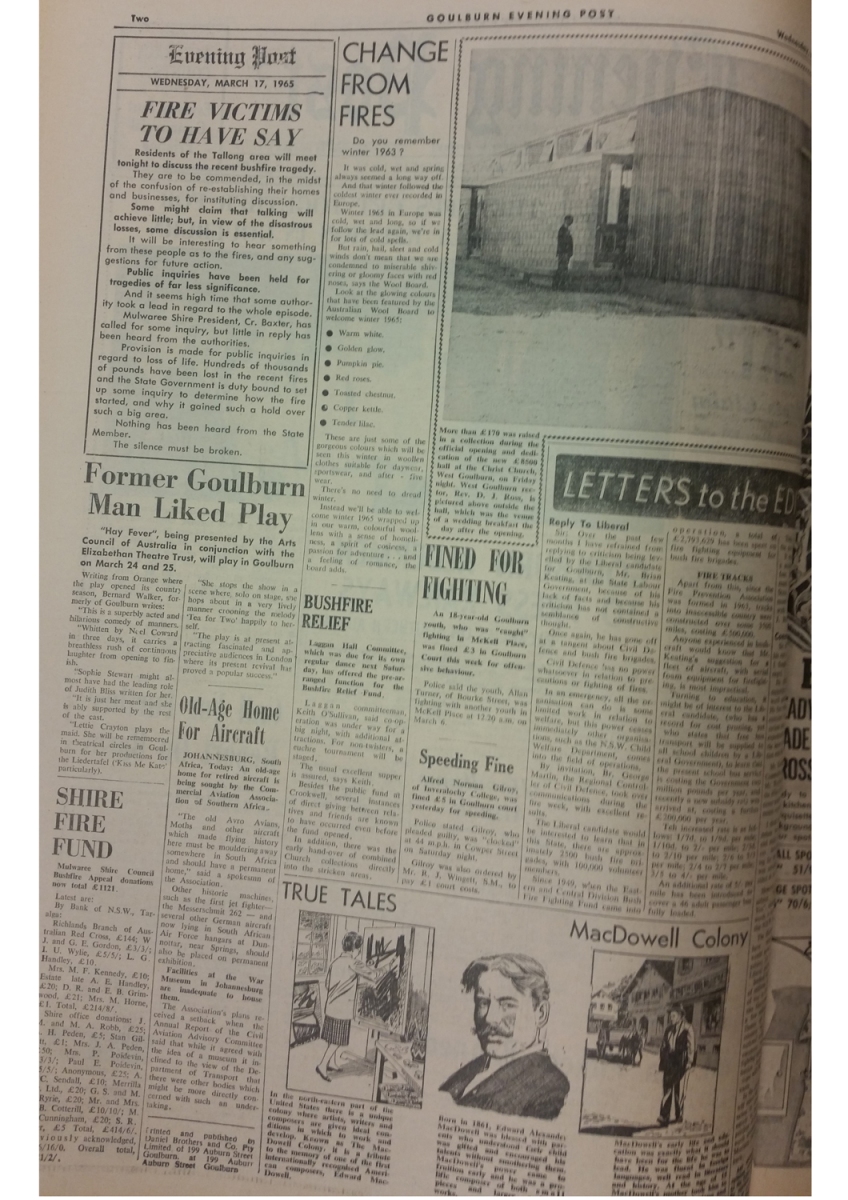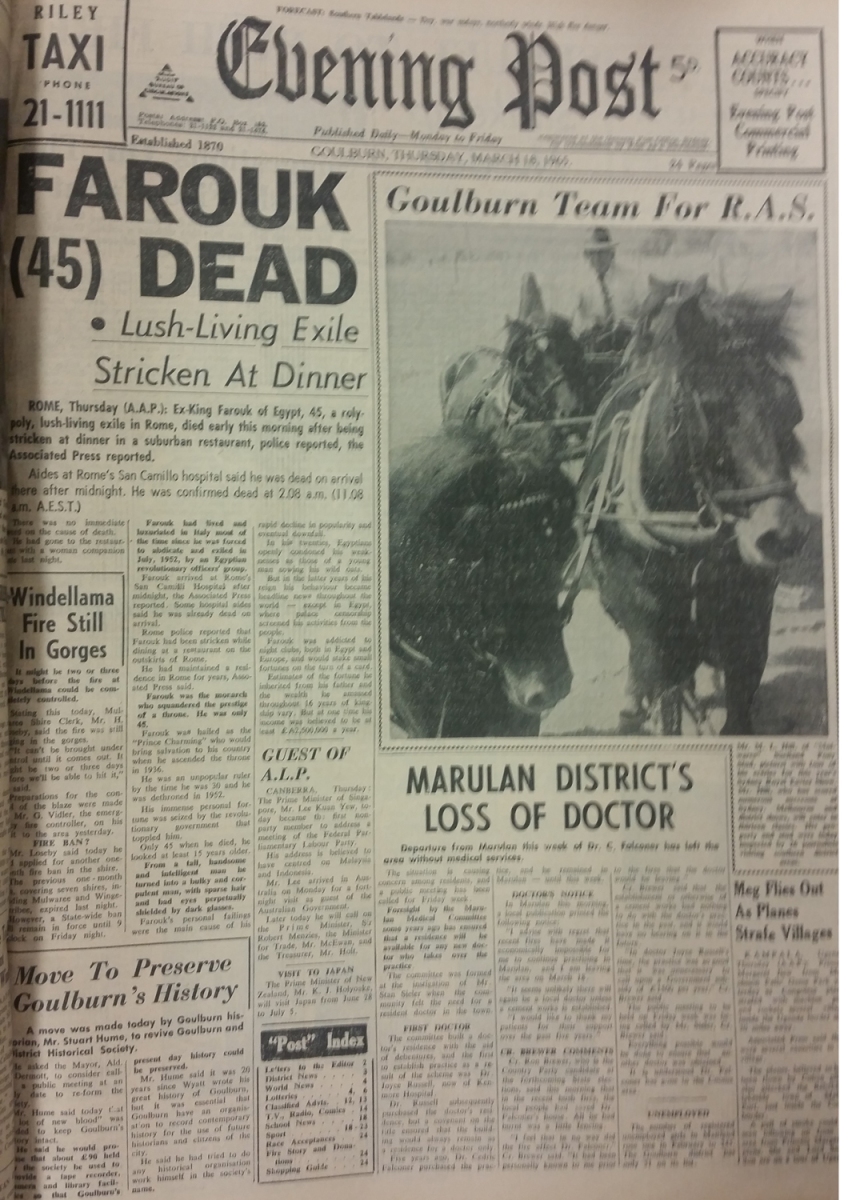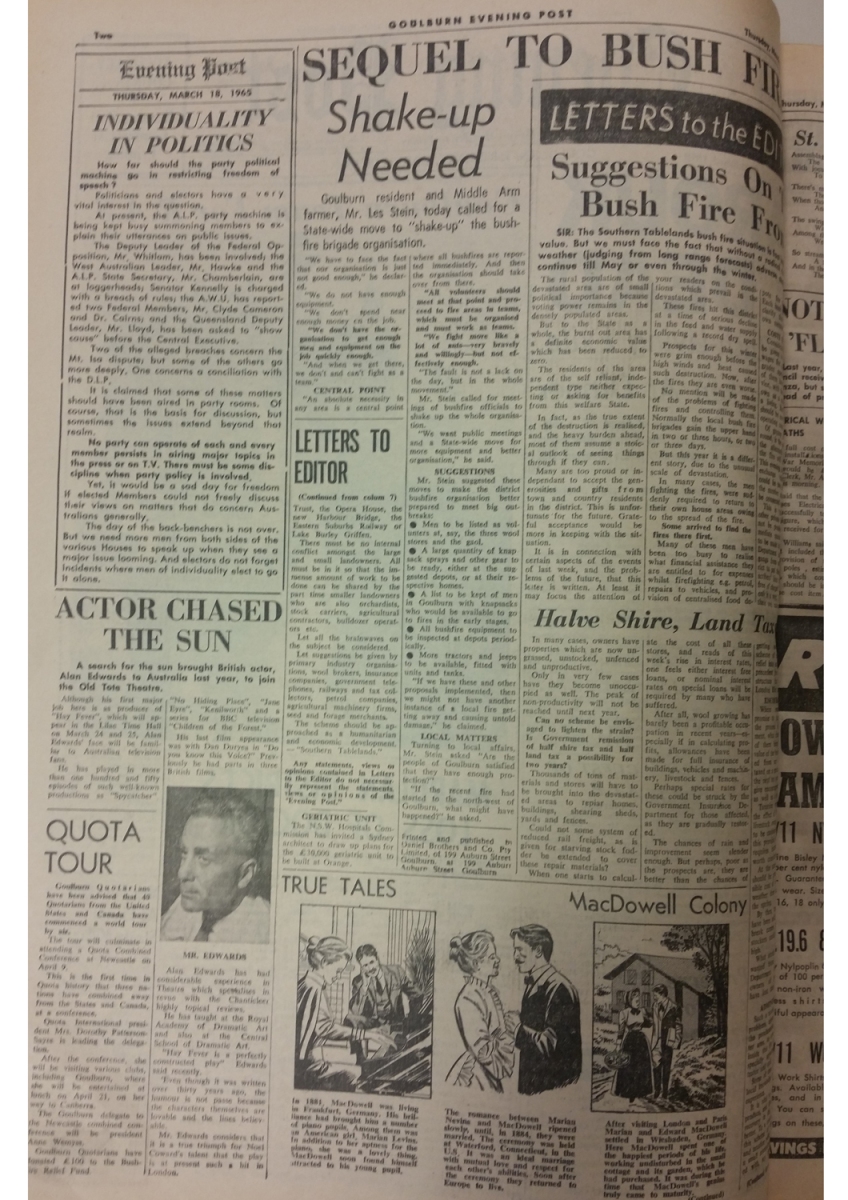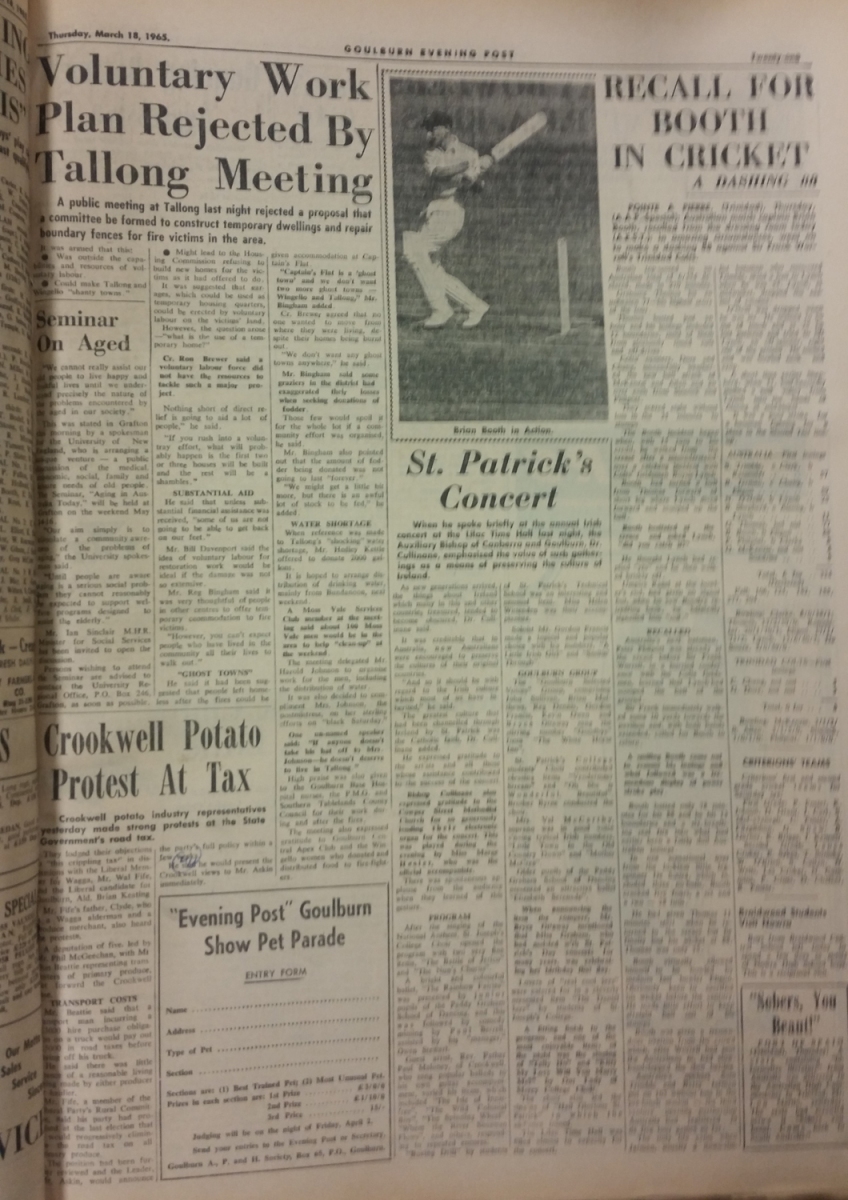Remembering the 1965 Chatsbury-Bungonia Fire

On its fiftieth anniversary, the Chatsbury-Bungonia fire of 1965 remains one of the worst natural disasters experienced in this region.
By the time the fire had burned out on March 14, it left in its wake an awful legacy.
Three lives were claimed by the fire.
Thirty one homes in Wingello were destroyed – essentially the entire village – with a further 28 homes lost in Tallong.
The charred land left by the blaze covered more than 620,000 acres (250,000 hectares) with thousands of head of dead livestock filling blackened paddock after paddock.
The fire, which started on Friday March 5, 1965 is believed to have been started by errant sparks from an angle grinder at Chatsbury Station. First responders from the Tarlo Bush Fire Brigade fought in vain to stop the blaze before it reached the Cookbundoons but even in those first few hours, in searing heat and howling winds, it was already too big, too powerful.
Veterans of the fire describe it as having a will as it pushed towards the southern townships of the Southern Highlands, picking them off one at a time and laying them to waste as it went.
Towrang, Tallong, Wingello, Penrose… many towns burned beyond recognition, some seemingly with no hope of recovery.
The firies were fighting a losing battle as town upon town fell. Able-bodied townspeople from Goulburn and other towns in the district joined firefighters on the front-line, ferried in by service clubs like Rotary on the backs of trucks, in family cars or anything else that could take them, as if they were going to war. And they were.
Firefighters fought furiously to contain the fire before it could reach Bungonia Gorge and spread across a wider front while an army of volunteers maintained a supply line of food to the fire-front.
Chatsbury-Bungonia Fire 1965: Photo Gallery – Click for higher resolution.
Archive photos from the Goulburn Post and Hellen McCallum.
The damage done to property and stock was estimated in the millions of pounds. Other forms of damage were incalculable. Farms, houses and whole communities were wiped out across the Southern Tablelands, the Southern Highlands, and right down to the South Coast.
By any measure, it was a disaster on a monumental scale.
These fifty years later, people who lived through it remember it vividly. Despite the many fires that would follow in the years since, this, to them, was the Great Fire.
The Goulburn Post spoke to some of those who were involved.
From the start, the fire moved quickly, placing lives and properties in its path. In a time before social media and mobile phones, the only reliable source of information was Goulburn’s radio 2GN. Listeners throughout the region were glued to their radios, listening for fire updates and warnings not just for their own well-being but to hear about loved ones in harm’s way.
Former Goulburn Post journalist Ray Williams, who was at the time news editor at 2GN, manned the microphone and headphones from dawn on Saturday March 6 until late that night.
Not only were his updates the only timely and accurate source of information for listeners, firefighters themselves – whose radios allowed them to talk within their own brigades but not to the brigade next to them – relied on Williams to feed them fire-front information and, at least initially, to act as a fire traffic co-ordinator. With communications fragmented and scattered across many miles, it fell to Williams to compile what information he could, interpret it and relay it to his listeners.
His efforts earned him special praise from then mayor Ernie McDermott after the fire had passed from the district.
Ray speaks effusively of the valiant and dogged efforts of the firefighters, who thoughtlessly rushed to stand in front of the blaze and then stayed fighting it for days on end, but he is quick to add that it was a moment of incredible community solidarity and a time of many heroes
“We were putting out a call for volunteers, and the number of people who turned up to volunteer was quite amazing,” he said.
“It happened that a member of Rotary popped his head in the studio and said `is there anything that Rotary can do?’ and I said `certainly, we need to get these volunteers out to the fire front.’ He said `Leave it to us,’ and that was the last we had to do about it because Rotary looked after that.
“Later a member of the Apex Club, which was a very active young man’s organisation in those days, dropped in and he said `is there anything Apex can do?’ and I said `Well, these firefighters need drinks and feeding.” He said `Leave that to us’ and they did everything… they had a whole kitchen going. They even arranged for bread to be baked outside the legal hours, just so they could feed them.”
“It was a really wonderful community effort… but it was a terrible time. I don’t think anything in Goulburn’s recent history could compare to it, partly because the communication system was so primitive.”
Another former Post journalist, Leon Oberg, first heard about the fire from listening to Ray Williams’ broadcast.
“I recall hearing on the radio about it that Saturday. I think it might have been in the afternoon that I first heard about it,’ he said.
“On that particular day, I recall vividly, Ray was almost indefatigable. He was broadcasting anything from 12 to 14 hours that day. I think he was the only way people could stay connected with various towns.”
Leon also remembers clearly the weather conditions of that day, conditions that in modern parlance might be referred to as a perfect storm for a catastrophe.
“It was a dreadful day: hot, hot and windy, exceedingly hot day and we thought, well, if a fire did really get away it would be a catastrophe. And so I started taking a deep interest in this and, of course Doug Haysie was the photographer at the Post at the time and he was off, like I was off, we were both off duty at that time, but he came on, grabbed a spotter plane with the fire crews and take some glorious photographs of the carnage, and it was truly carnage – showing buildings burnt, showing the railway station at Marulan from the air, burnt, and later we became heavily involved on the ground.”
It was a dramatic initiation for Leon, who had only been working with the Post for a few months at that stage.
As the graphic reproducer, it fell to him to handle all of the incoming photos from the fire, and many of those images stay with him still. Particularly images of dead livestock.
“I did go on to the fire ground myself on two occasions and it was truly, truly devastating. The carnage through places like Tallong and Penrose was just mind-blowing and it was just a blackened ruin,” he said.
“We look at property losses, houses and things and shed burnt, and caravans and so on, that’s terrible and people get burnt and so on, but the stock, they’re helpless. It’s the stock I also really feel for.”
Leon said it was important not to forget that there were several other fires burning in the district at that same time, including a fire at Bungonia that took the life of one of his friends, Bruce Peden, and which later merged with the Chatsbury fire in Bungonia Gorge.
“It’s significant to remember that on that day we had two bad fires,” he said.
“It’s a tribute to the many volunteers and firefighters and the fire brigade at the time that they saved what they did.”
After originally publishing these accounts, the Post was able to speak with two other people lived through the fire. Both were children at the time but the memories, like the land, were seared with the blaze.
Helen McCallum nee Read was just 14 years old in early 1965. Helen brought several photos (see above) of her house and the fire aftermath at Tallong in to the Post this week and was willing to speak with us about her memories of it.Helen McCallum nee Read was just 14 years old in early 1965. Helen brought several photos of her house and the fire aftermath at Tallong in to the Post this week and was willing to speak with us about her memories of it.
Another who experienced the fire as it hit Tallong, and also as a child, was Goulburn Mulwaree Mayor, Cr Geoff Kettle.
Although he was not quite five years old, the memory is one of his most vivid, in fact one of the earliest memories he has.
While he has lived through many other bush fires, and even been involved in disaster management in his role as mayor, he remembers the 1965 as a once in a lifetime event that affected his family personally and instilled in him an admiration for emergency services personal, paid and voluntary, that he retains to this day.
Chatsbury-Bungonia Fire 1965: Newspaper cuttings – Click for higher resolution.
![]()
 English
English
 French
French
 German
German
 Italian
Italian



